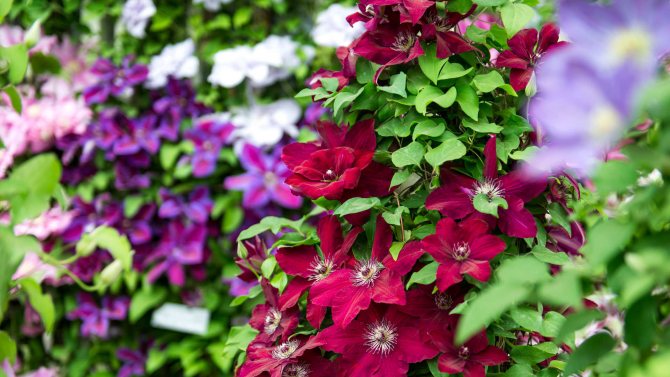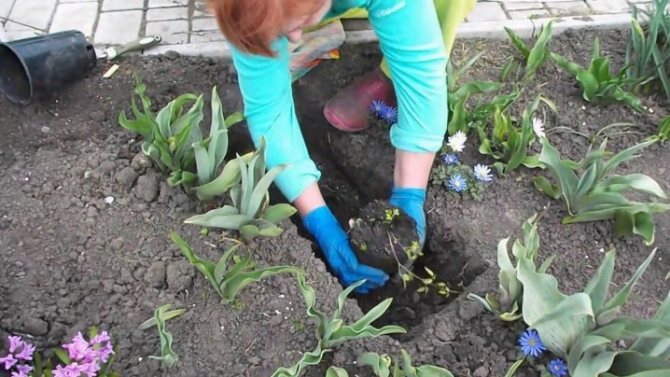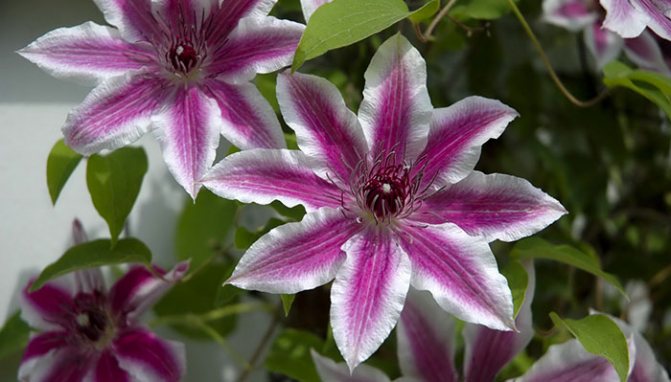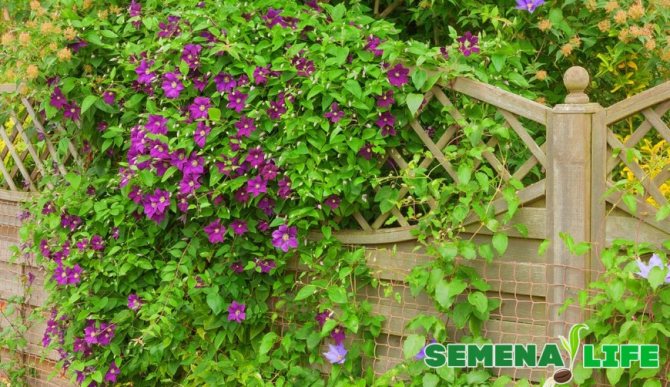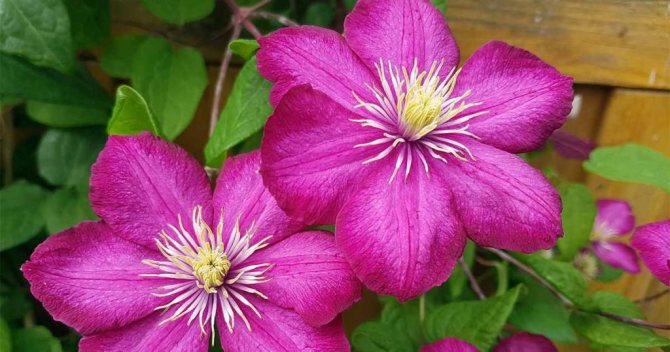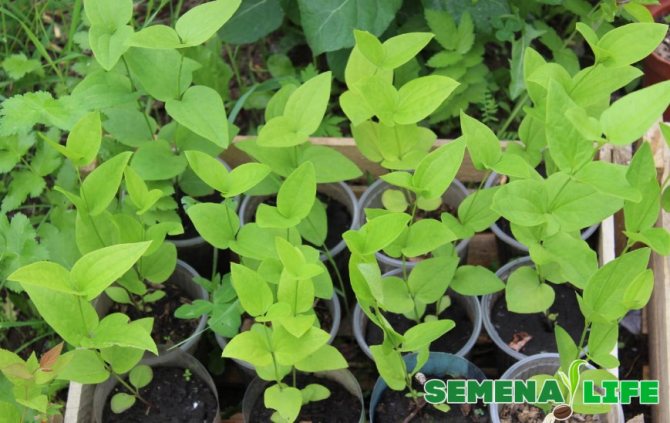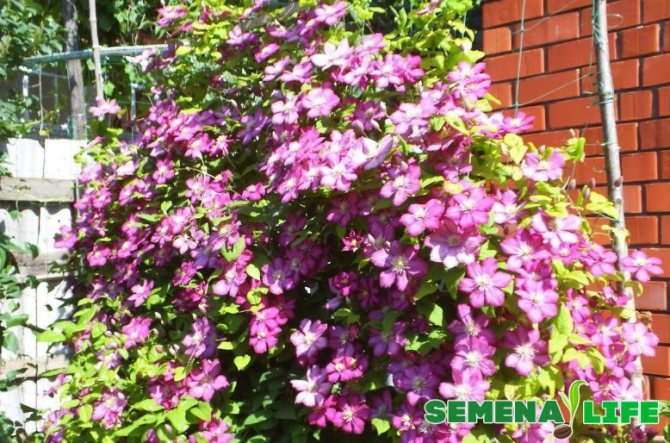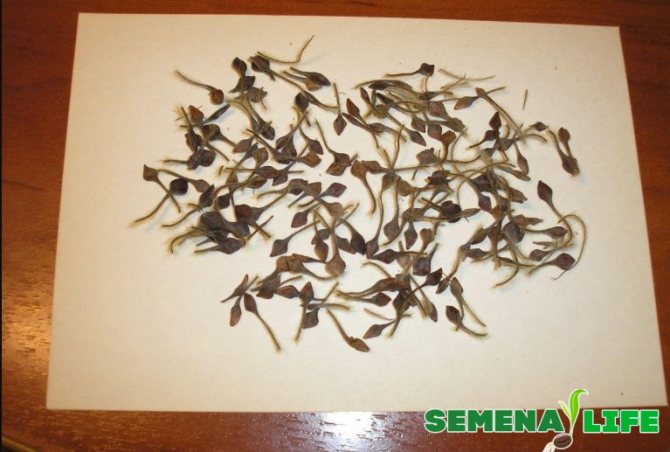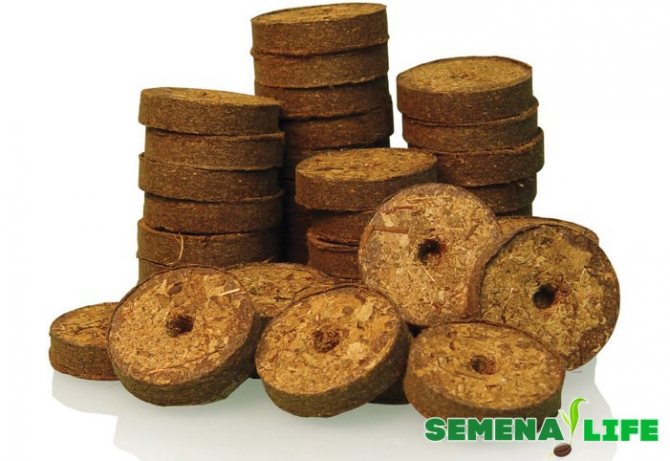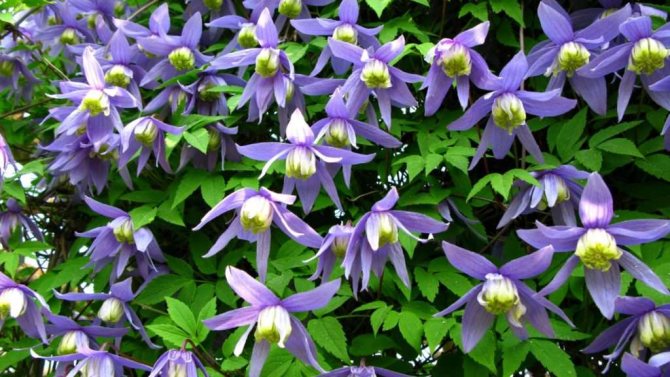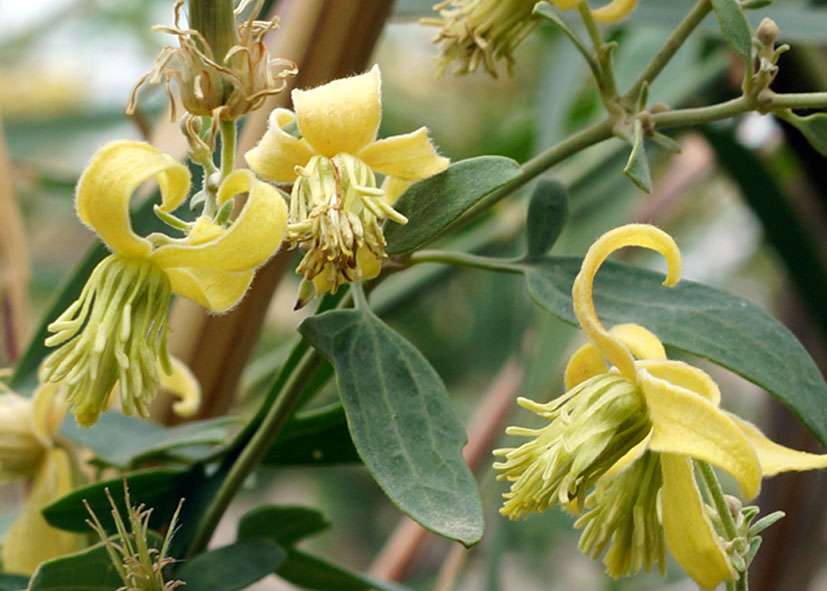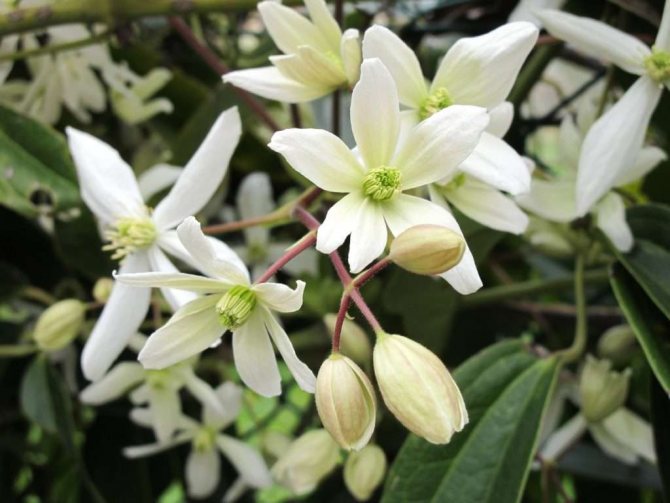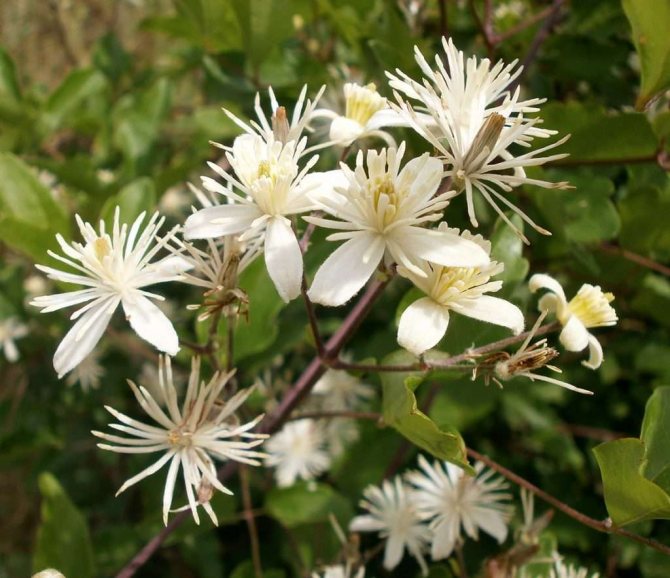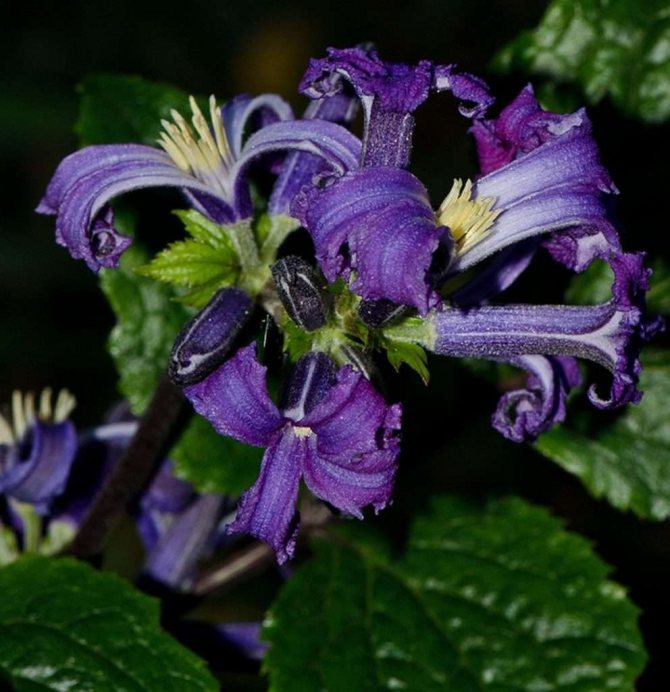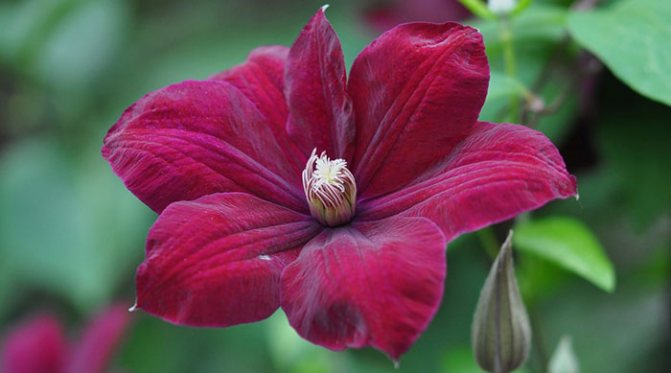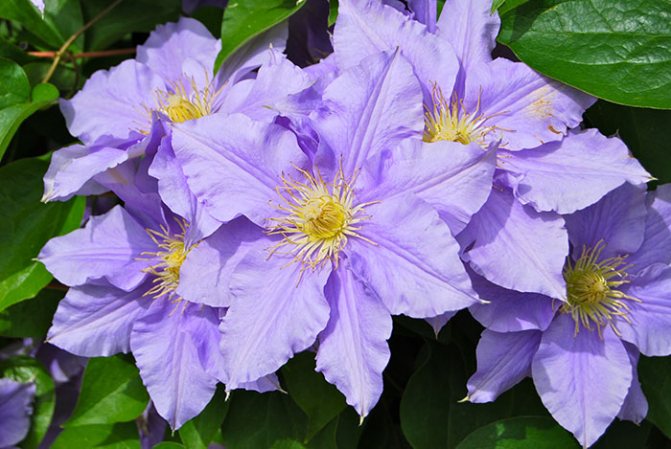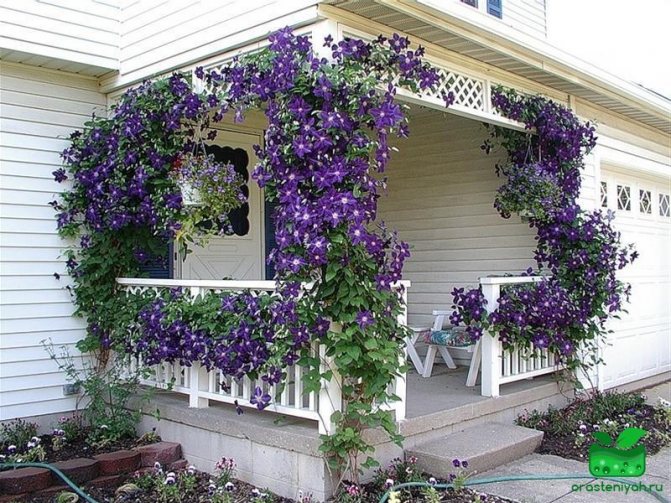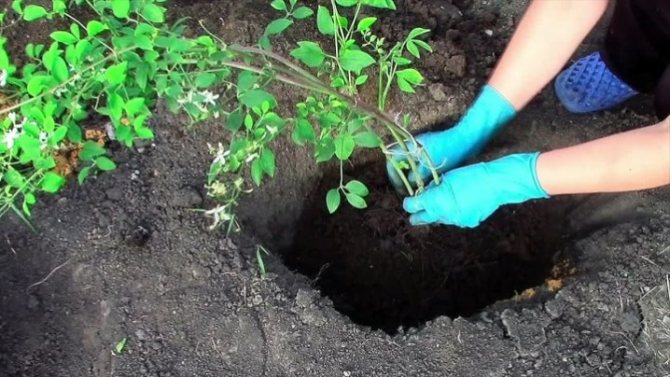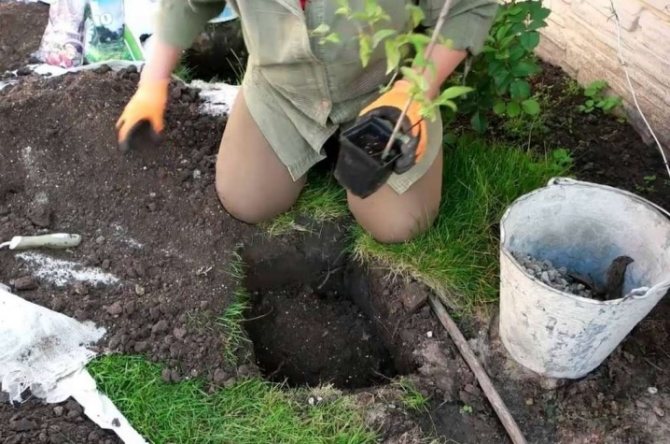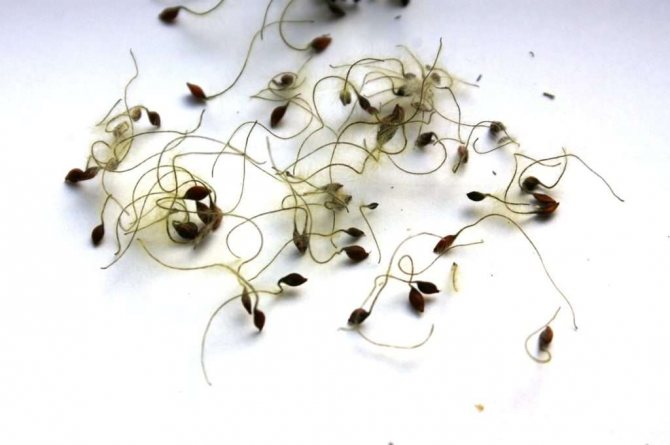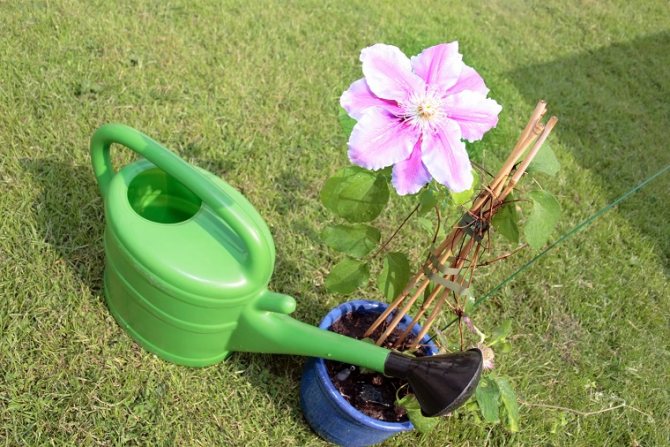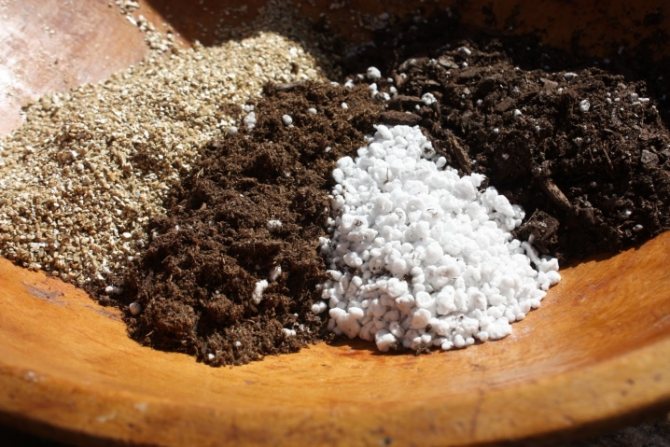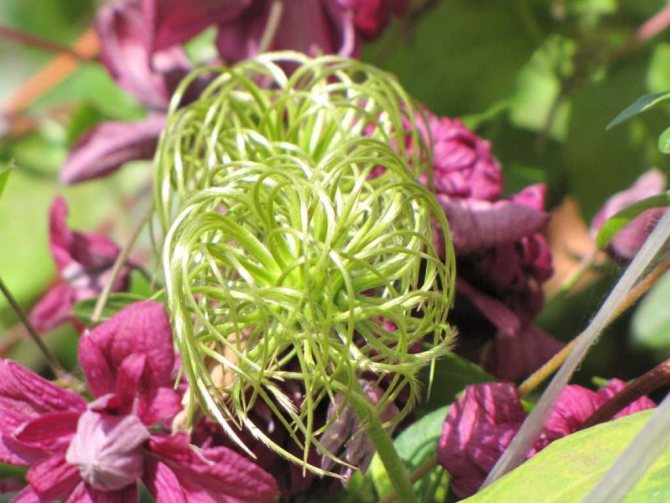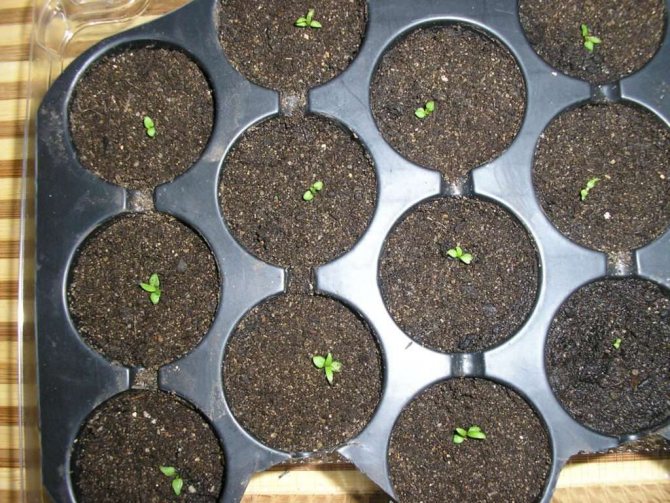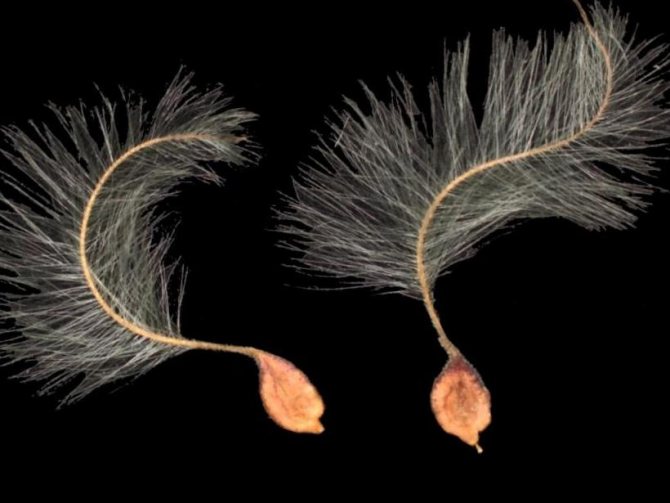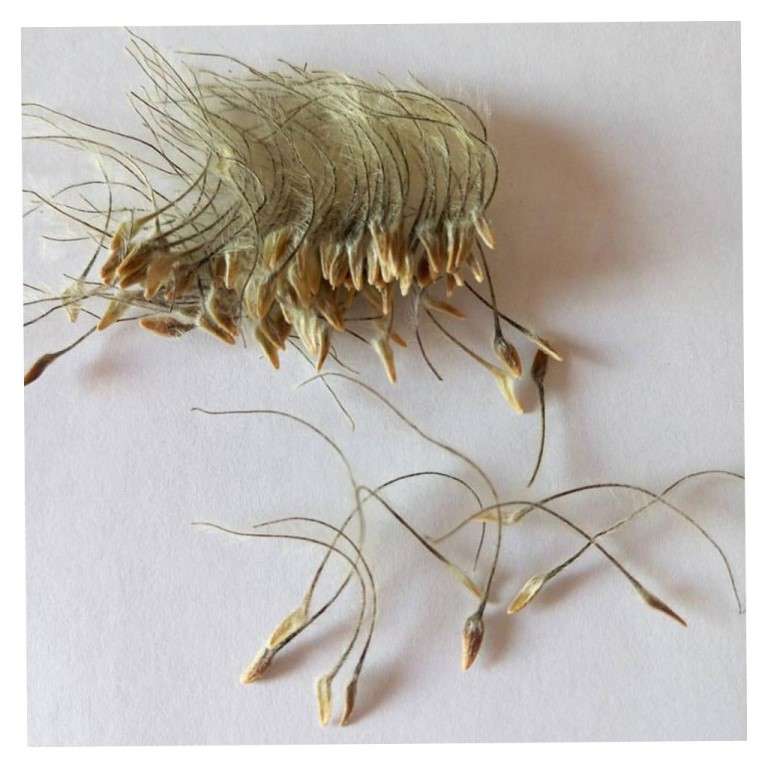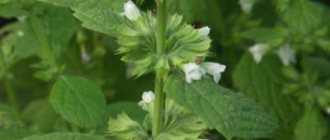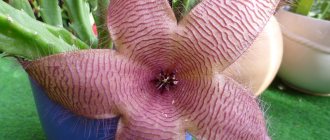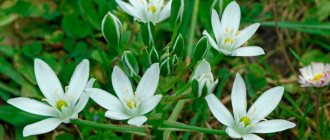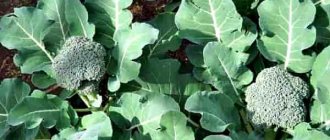Clematis (clematis) are one of the most coveted and sought-after flowers by gardeners and landscape designers. There are 14 wild-growing species of clematis in the world; to date, about 300 garden hybrid varieties have been obtained by breeders.
The plant propagates most often by cuttings or layering. But experienced, patient gardeners and breeders use the seed method of propagation. Growing clematis from seeds at home requires time and labor, as well as the mandatory accuracy of the implementation of recommendations.
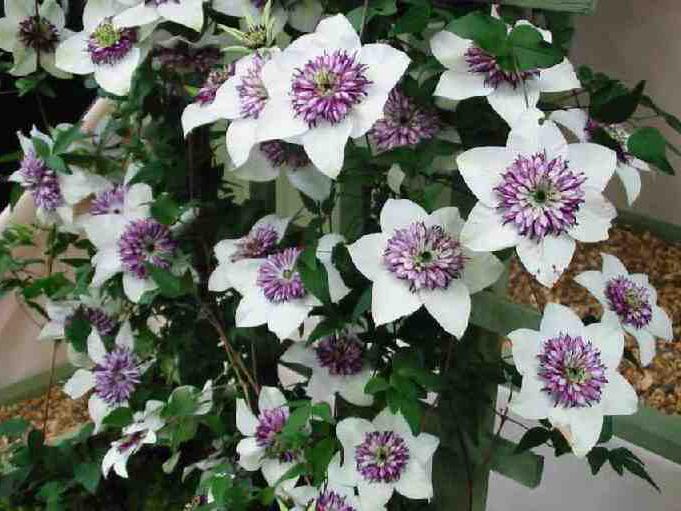
A little about the plant
Before proceeding with the story of how clematis needs care, it is worth mentioning the diversity of cultural forms. The plant belongs to the large buttercup family. In the wild, clematis grows in the temperate zone in a subtropical climate. In total, there are approximately 300 varieties of culture.
Climbing vines and ornamental shrubs are represented in the clematis genus. Gardeners generally prefer to grow plants with liana-shaped stems, they are used for landscaping gazebos, verandas, pergolas, and small architectural forms. The plant feels great outdoors and in winter gardens.
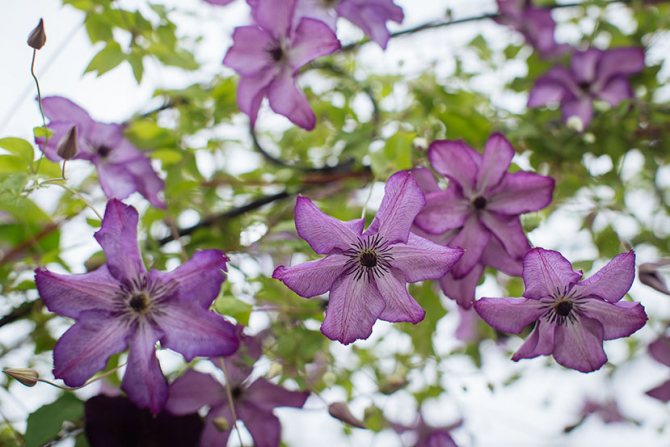

Different types of clematis differ significantly from each other in the structure of the root system, the size of the flowers and other signs. Among all the variety of plants, you can see forms with large and small flowers. Their petals range in color from white to dark purple. Very often the corolla has a multi-colored color, colored spots or contrasting stripes. On average, the plant height reaches 2-4 meters. And the diameter of the flowers reaches 15 centimeters.
Growing clematis in the garden
Flowers are grown at home: on a windowsill, balcony, glazed terraces; planted in the country.
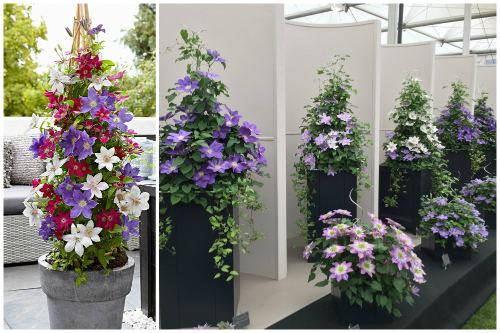

Planting clematis begins with the choice of variety and location.
- To decorate walls, arches, fences, gazebos, vines are suitable, without them it is impossible to imagine vertical gardening. Clematis bushes or individual flowers planted in groups will decorate a lawn, a stone garden, any area.
- An important condition for growing clematis in the open field is a place. It must be protected from drafts, winds that can break young shoots.
- To plant clematis, you need fertile soil: loose and soft loam. Acidic soil, salty, clayey, with a close occurrence of groundwater, as well as peat bogs and sand, is not suitable.
- The place of planting flowers should be well lit by the sun. For some varieties, light partial shade is acceptable. Also in the southern regions, where there is a lot of sun, and it is especially scorching, flowers are planted in semi-shaded places to avoid complete burnout.
Bushes are grown in elevated places, drained so that moisture does not stagnate. Very often, the flowers die due to the long thawing and stagnation of moisture.
For the growth of clematis vines, supports are needed. They are placed before boarding. When installing, the supports are buried at least a meter so that the strong wind does not swing them, since the height of the supports can reach 4 m.
If the vine will close the wall, then the support is placed at a distance of at least 40 cm from it to ensure ventilation.The distance between the bushes of flowers and the fence, especially the iron one, should be even greater (up to 1m).
Related article: How to make supports for clematis with your own hands.
Small-colored forms
Among the small-colored forms, it is worth highlighting the tanguica. Plants of this species reach four meters in height. Such clematis bloom from mid-summer to mid-autumn. The plant has bell-shaped flowers of a yellow hue. Lianas are frost-resistant. The Tangut species is able to withstand temperatures as low as -30 degrees.
Another representative of small-flowering plants is paniculate clematis. This form has the longest length, which can be 11 meters. Clematis flowers begin to bloom in the second half of summer. Milky white flowers are small in size - no more than three centimeters in diameter. The lianas of the plant are completely covered with inflorescences.
Graft
Having set out to grow clematis from seeds, gardeners often try to immediately get plants with large double flowers. However, not everyone is ready to take such a risky step, therefore they act much easier and acquire shrubs. But if the gardener has sufficient experience and is familiar with the rules of care, then he may do otherwise. In this case, he needs to understand one important the rule of growing capricious varieties from seeds: they will definitely require vaccinations for more resistant species.
- it is recommended to carry out this procedure in pots, using a jar as a shelter. After waiting for the cuttings to grow together, it can be removed;
- it is possible to plan the planting of the grafted clematis only for next spring;
- grafting of plants can be carried out by any of the available methods. The most important thing here is that this operation is carried out as quickly as possible in order to exclude the drying out of the cut site.
Zhakman's variety
The hybrid variety was obtained by crossing in the nineteenth century. A large liana has a developed root system that easily holds the ground part. Flowers appear on new shoots of the current year, and therefore winter pruning of clematis is allowed. Caring for plants of this variety does not differ from other varieties. Clematis flowers are purple in color and reach 15 cm in diameter. Vines are planted near the walls of houses and powerful supports to provide support for clematis. Plant care is about choosing the right planting site. The culture prefers bright areas of the garden with good wind protection.
Reproduction of various varieties
In order not to have problems with the cultivation of clematis, it is necessary to use small-flowered varieties, which in their properties are as close as possible to the wild ones. It is not recommended to use complex hybrids for growing, as this significantly reduces the chances of getting strong and healthy plants from seeds. Moreover, there are such large-flowered varieties of clematis, which are not possible to grow indoors. You can get them only by contacting nurseries, where they are offered to everyone in the form of seedlings or young shrubs.
Clematis Manchu
Most often, in temperate climates, Manchurian clematis is grown. It is quite easy to get strong seedlings from the seeds of this variety, and subsequently well-developed adult bushes, since in its properties it practically does not differ from wild-growing relatives. This variety is very resistant to negative temperatures, and even having a small size and a discreet color of flowers, this plant can decorate any site.
Clematis Tangut
Florists who are not indifferent to bright bells should turn their eyes to Tangut Clematis. This could be, for example, "Love Radar". Although it can be difficult to grow this variety from seeds, this problem can be solved if desired.For flower growers, this variety is interesting due to the fact that it tolerates low temperatures well, blooms for a long time, and also provides the opportunity to enjoy its flowering even in indoor conditions after transplanting into pots or tubs.
The Tangut clematis differs in that as it grows up it grows into a climbing vine. Therefore, in order to enjoy his flowers, he will need to establish a reliable support. You can enjoy the sight of yellow bells already at the end of May. Moreover, until the fall, these flowers will be able to bring great joy not only to the gardener, but also to those around them.
Helios variety
Among cold-resistant varieties, Helios deserves special attention. For many growers, this variety is one of the most attractive. However, you need to take into account the following point: before you receive an adult clematis, it will have to be grown indoors or indoors... This is due to the fact that only adult plants tolerate low temperatures well.
You can also grow large double-flowered clematis. Any gardener who decides to plant the seeds of this plant will definitely be able to wait for the shoots. However, you need to be prepared for the fact that, having reached an adult state, these clematis will no longer demonstrate the beauty that the mother bush possesses. To eliminate such differences, you will have to carry out a complex vaccination. Therefore, if you do not want to face similar problems, it is better to buy ready-made shrubs in advance.
Viticella
Plants of this variety reach a height of five meters. But at the same time, they do not require winter shelter and are easy to care for. Photos of Viticella clematis allow you to appreciate their beauty.
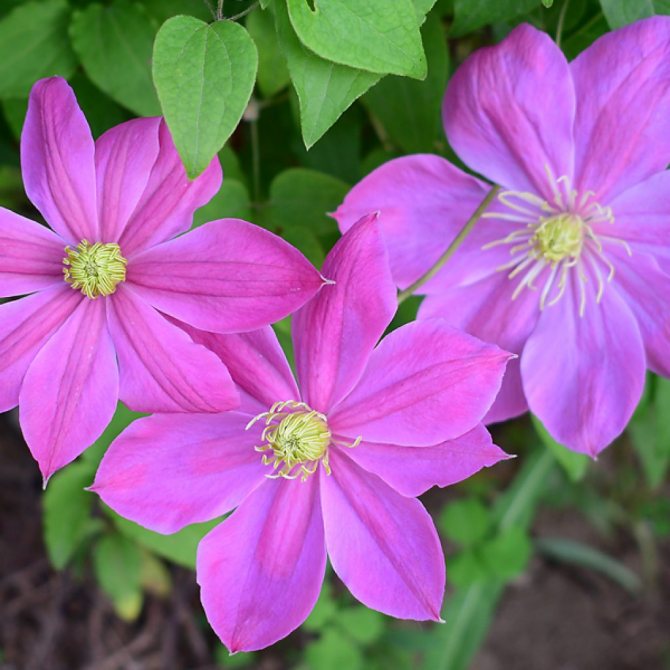

Flowers appear on the shoots of the current year, so the vines are heavily pruned for the winter. The size of flowers and the intensity of flowering fully depend on the amount of dressings.
Seedling care
- When the seedlings have 2-3 true leaves, it is necessary to dive, that is, transplant into hotel plastic containers or cups.
- Around June, the seedlings should be exposed to the open air, while taking care of shading using homemade screens.
- Be sure to pinch the tops of the shoots.
- They are fed 2-3 times with complex fertilizers in liquid form.
- In autumn, closer to winter, the shoots must be cut off, leaving 2-3 internodes.
- At the base of the stems, mulching is carried out using peat.
Choosing a landing site
Care and reproduction of clematis are simple if you know all the features and requirements. The first thing to pay close attention to is choosing the right landing site.
If you want to be pleased with the exuberant flowering of clematis flowers in the future, care should begin with preparing the place where you plan to plant your plant. Most of the plant varieties have a heavy ground part. Therefore, it is necessary to plant a culture near fences, walls, outbuildings or supports. If there is nothing suitable on the site, then you can plant a plant in the place where you can build supports.
Clematis do not tolerate strong winds and do not like drafts. This is something to keep in mind if you plan to provide the plant with proper care. Clematis may even die in a draft, especially when it comes to a young, fragile plant. Therefore, for culture, it is worth choosing a secluded, quiet place.
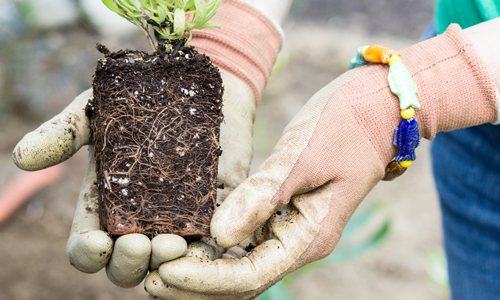

Clematis prefer moist soil, but at the same time they dislike wetlands. It is preferable to place plants in sunny, windless areas. In regions with hot climates with bright sun, flowers and leaves of the crop can get burned. Florists believe that the ideal planting site is a section of the garden facing east.
Purchase of planting material
Clematis, which have taken root in a permanent place, delight the owners with lush flowering for at least 20 years.But this is provided that high-quality planting material is selected and all conditions for its germination are met. When deciding to purchase clematis seeds, you need:
- keep them in the dark;
- not having enough experience - to acquire small-flowered clematis;
- hardening with cold temperature;
- choose only seeds from well-known manufacturers.
A good option would be the opportunity to borrow or purchase seeds from familiar gardeners, on the site of which clematis do not get sick, they bloom magnificently. The purchase of seeds of regional varieties, as most adapted to climatic conditions, also justifies itself.
They are looking for clematis saplings for sale in early September, in spring it is much more difficult to buy them, and summer is not suitable for such work. Planting material must meet the following requirements:
- Root system consisting of at least 5–6 roots.
- No damage, lethargy, pale shades.
- The presence of developed shoots of clematis.
- If possible, the plant should be 2 years old.
No need to be tempted by the offer to buy clematis grafted on wild plants. Money, fertilizers, work will be wasted, and such samples should not be sold.
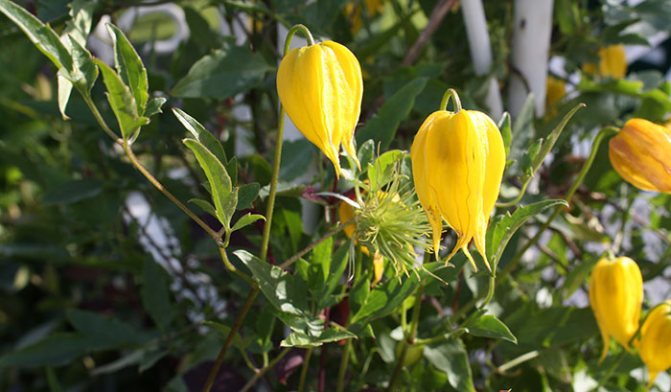

Planting in spring
Clematis can be planted in spring with the arrival of stable heat - at the end of April or at the beginning of May. Landing pits should be prepared in advance. If clematis is planned to be planted in an area with poor soil, then a nutrient mixture should be added. It can be made from a mixture of sand, peat, compost and garden soil. In addition, dolomite flour and superphosphate can be added to each hole. Enriching the soil will facilitate further maintenance. Clematis in the open field are planted by making drainage. At the bottom of the pit, a drainage layer of expanded clay, fine gravel or broken brick is poured. A prepared nutrient mixture is poured over the expanded clay, and a seedling is placed on it, which is covered with soil from above to the first internode. It is not recommended to fill the trunk circle to its full height, you should leave a recess up to 10 cm deep. Mulch is poured into it from above, leveling the area. Caring for clematis in the spring consists of installing supports. It is better to place them during planting. This will facilitate further care.
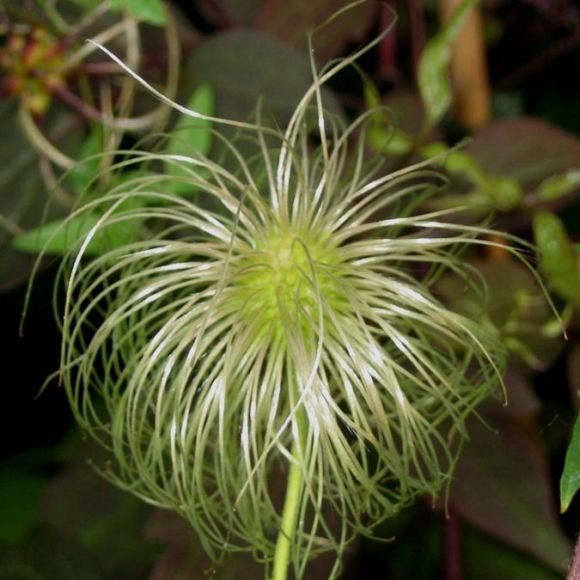

If you plan to plant several plants, then leave a distance of at least one meter between the bushes.
Sowing seeds for seedlings
Another feature of clematis, in addition to the long term for seed germination, is compliance with strict conditions of detention, such as sterilization. Boxes or cups for seedlings must be treated with a disinfectant solution, the soil for sowing is also sterilized, water for irrigation is boiled and cooled. All of these preparations increase the likelihood of healthy seeds emerging.
How to plant mint and grow from seeds in the country
A mixture of sand and black soil in proportions of 1: 2 is poured into cups treated with a disinfectant solution by about three quarters. Clematis seeds are scattered on a thoroughly watered mixture, covered with a layer of 1-2 cm of black soil or river sand. This depth of the seeds is optimal, which will allow them to germinate on time.
The top layer should also be watered sparingly. Then the seeds are covered with a glass glass, which will maintain the necessary moisture and high temperature for germination.
Watering should be moderate and regular. Therefore, this procedure is recommended to be carried out through trays into which water is poured, or using a rubber pear, so that the seeds are not washed out of the soil. To maintain optimal humidity, the glass bowl is removed for a couple of hours daily.
Important! Winter crops are kept on the windowsill, spring or summer crops can be left outside. The ideal temperature for germinating seeds is 26-30 ° C.
Large seeds need stratification for several months on the bottom shelf of the refrigerator at a positive temperature of 4-6 ° C. Small seeds are planted directly into the ground or greenhouse.
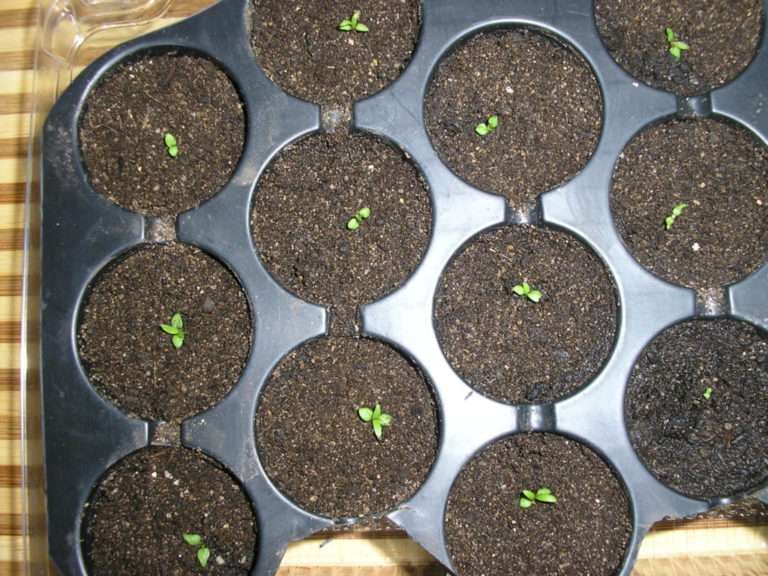

Seedlings of clematis
After the plant has sprouted and acquired two pairs of leaves (the first two leaves are called cotyledons, the next two are already real leaves), the clematis seedlings are planted in a greenhouse, large pots or open ground. Planting is done in spring, after the threat of night frosts has been minimized.
Note! In order for clematis to take root well in the open field, the seedlings should be hardened. To do this, boxes with future vines are taken out into the street daily for 3-4 hours for 1-2 weeks.
How to grow clematis from seeds: planting, care, photo
Varietal seedlings take root well when planting. But their cost is quite high. Therefore, gardeners very often attempt to grow a plant from seed. Experts note that the process is not easy, since it takes a lot of time.
Large seeds germinate for a long time. The emergence of seedlings can be expected up to 8 months. The seeds of the varieties Zhakman and Durand germinate for a very long time. Coarse seed takes a long time to hatch and is often uneven. It is recommended to sow seeds immediately after collecting them.
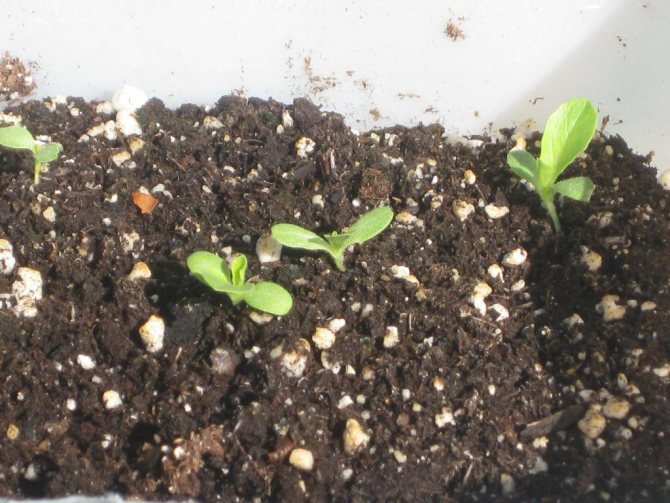

Medium-sized seed germinates slightly faster - from two weeks to four months. The most friendly seedlings can be expected from small seeds that are sown in March. For this, only fresh seed is used. It is believed that germination lasts up to four years, but subject to a certain temperature regime (+ 10 ... + 23 degrees).
You can speed up the process of seed germination using pre-soaking. The seed is soaked for ten days, changing the water daily. After the seeds are placed in a mixture of peat and sand. Plant pots are best placed in a greenhouse.
How to collect and store clematis seeds
How to grow ampelous catharanthus from seeds
Before growing clematis from seeds for seedlings, you need to acquire seed material. Clematis seeds are purchased in a specialized store or harvested at home. On a flowering plant, you need to collect inflorescences in which the seed head has acquired a brownish tint and seeds are visible in it. Such outward signs indicate that they are ripe and dry.
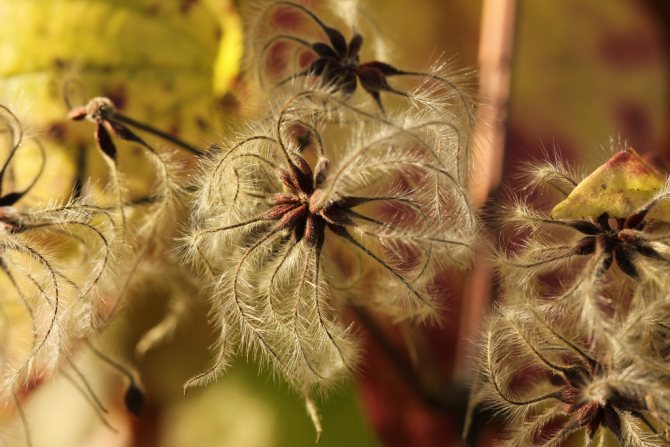

Ripe clematis flowers
The collected seeds are stored in a dry room without access to sunlight. To avoid rotting, the seeds are wrapped in paper or laid out in a thin layer on a wooden surface. It is recommended to store ripe and dried seeds for up to 48 months, some varieties are less.
Important! Freshly harvested seeds germinate much faster than their counterparts that have been stored for more than 12 months.
The size of the clematis seeds affects the timing of planting and the duration of germination. Small are considered to be 3.1-5.1 mm long and 1.6-3.2 mm wide, they are sown from the beginning of spring to April, with an average of 4.8-6 mm in length and 3.2-4.5 mm. wide - in the first half of January, large 6.5-12.5 mm in length and 5-10 mm in width - in the autumn months.
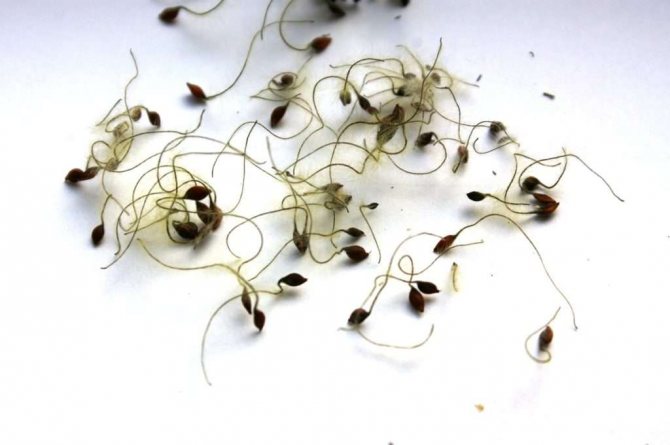

Clematis seeds
Woolly, spreading, clematis of Duran, Pitcher and several other species ripen in large seeds, which germinate unevenly from one to seven months. Representatives of the Manchurian, whole-petal, six-petal and clematis from China differ in medium-sized seeds and germinate within a month or six months. Small seeds of different varieties of clematis germinate at the same time in the period from two to 17 weeks.
Note! The size of the seeds has nothing to do with the size of the plant and its inflorescences.
How to care for clematis after winter
Spring care for clematis consists of removing the upper part of the soil. This must be done immediately after the frost stops. The technique is used to simplify the process of stem germination. In this case, the appearance of the first flowers can be counted on at the beginning of summer.
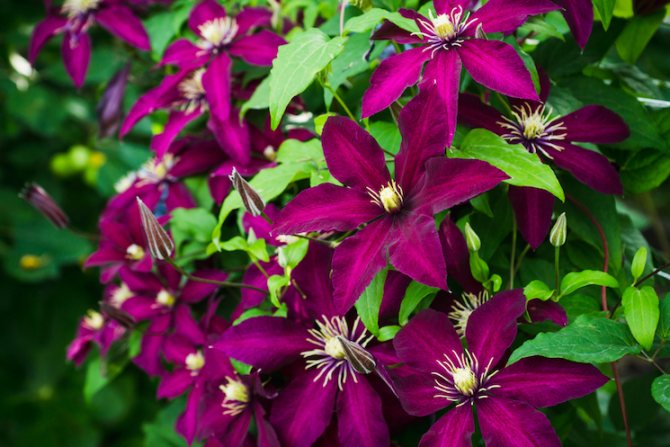

In the spring, you need to start watering clematis. It is enough to moisten the soil once a week. Do not flood the plant too much until it reaches a height of 50-60 cm, since at this time the vines are most vulnerable to decay. As clematis grows, you will have to add soil until the height of the hill at the base reaches 10-15 centimeters.
In addition, in spring, plants grown from seeds are planted in the ground.
Soil and watering
If you want to get clematis seedlings in early spring, it is recommended to carry out sowing seeds in special boxes... With the arrival of spring, they can be taken out into the street, and until that moment they are kept on a windowsill or loggia. You can get strong seedlings only if the boxes are filled with nutritious potting soil. To prepare it, you need to take:
Usually, after planting, the seeds germinate over a period of from 3 weeks to 3 months, which is determined by the variety used and the conditions that are maintained indoors. During this time, it is important to provide proper care: keep the soil moist, avoiding stagnant moisture.
If you have never sowed clematis seeds before, then it would be best if you choose Manchurian clematis. You can get seedlings from it with a high degree of probability, even if you do not have experience in growing these plants. Subsequently, when you get acquainted with the important nuances of growing, you can use seeds of more capricious varieties as planting material.
During sowing, it is recommended to place the seeds at a depth 2-3 times the size of the seeds. On top of these it is recommended pour clean river sand and slightly compact the soil. The sand will help the seeds germinate much faster.
Watering the culture
How to properly water clematis? The description of care would be incomplete if you do not remember what watering should be. In summer, the plant must be watered at least twice a week. When the air temperature rises to +28 degrees, the number of irrigations should be increased up to three times.
Do not forget about the peculiarities of moisturizing exotic varieties of clematis. Caring for them should be more thorough. Varieties such as President, Countess Lovelace and Niobe should be watered more frequently. Such clematis have large and bright flowers, which indicates their origin. However, it is worth remembering that excessive waterlogging can cause root rot.
Varieties of clematis
Florists do not have a single system for dividing clematis into varieties. They are distinguished by origin, roots (fibrous or in the form of a rod), color, vitality, by the type of pruning and other characteristics.
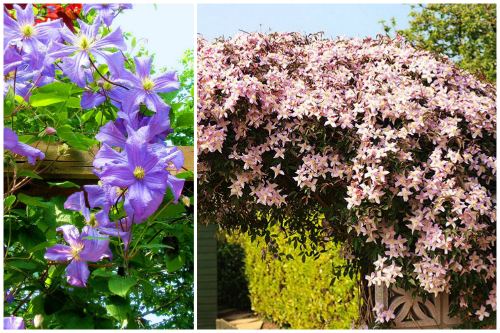

The culture is represented by many species: tall lianas, shrubs, herbaceous plants. More often clematis are vines that climb on a support, clinging with leaf stalks.
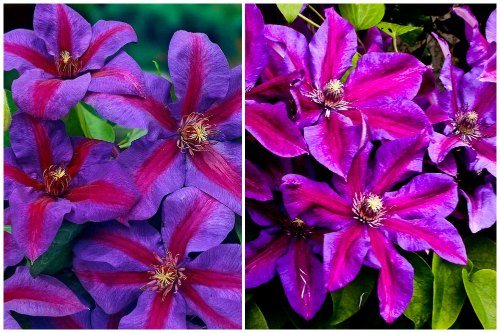

Clema - "a plant that winds" (translated from Greek). The names of flowers have taken root among the people:
- rod;
- clematis;
- nipplewort.
In nature, there are more than three hundred varieties of clematis.
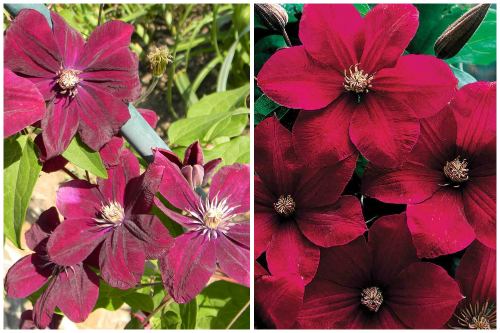

It is believed that flowers grow well and flourish only in the southern regions. This judgment is erroneous.
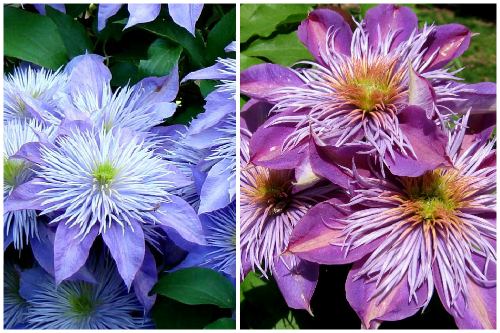

When choosing winter-hardy varieties, fulfilling individual growing and care conditions, clematis clematis takes root well in many Russian regions with cold winters.
Top dressing
It is important for every grower to get an abundant flowering of clematis. According to reviews, the care and cultivation of a crop is impossible without top dressing. It is they who provide bright flowering.An organic concentrate intended for strawberries is added to the soil twice a month, which should be diluted according to the instructions. In addition, experts recommend watering the plant with milk of lime once a month. This product can be replaced with dolomite or flour diluted in water. This composition is safer. Plus, it's easier to prepare. Plants of exotic varieties with the arrival of summer must be fertilized with copper concentrate. It is bred in a ratio of 1 tbsp. l. on a bucket of water.
How to grow clematis
Clematis roots and vines are fragile and do not recover well from rough handling, so treat the plant gently. If your plant has a tiny trellis from which it was sold in a store, hold it in place and have someone help you hold up the trellis when you remove the pot; otherwise, the grate may fly over and damage the fragile roots.
Dig a hole twice as wide as the flower's root ball, placing the plant deeper than the soil level. Add a large trellis right away so the plant can lean on it and grow.
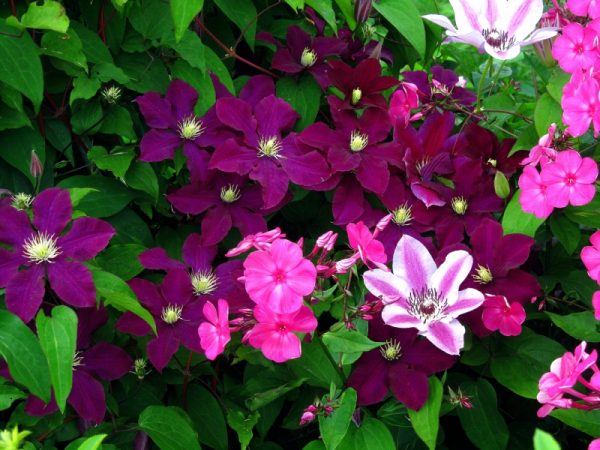

Pruning
Pruning clematis is possible in several ways. The choice of method depends on which group a particular variety belongs to. There are two groups of plants: A, C and B. Caring for clematis species A consists of pruning dry and weak shoots, since large flowers are formed on perennial shoots.
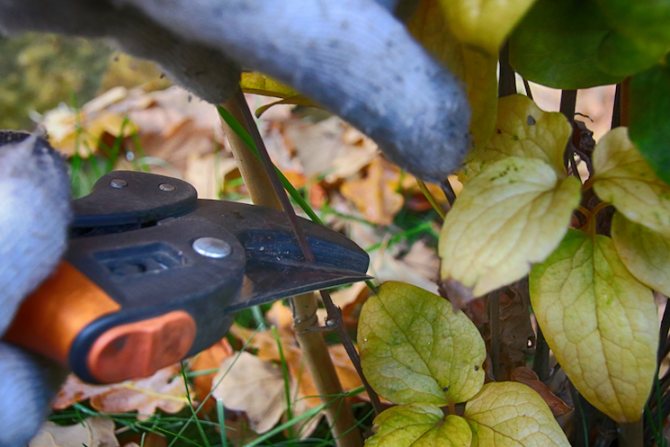

Plants of group B are pruned more seriously, damaged stems are removed completely. Clematis type C is completely cut to the level of the rhizomes. In this state, they hibernate, and such varieties do not need strong shelter.
Plants of group A and B require some preparation for winter and care. In autumn, clematis must be prepared for frost. For the winter, vines should be covered with suitable material. Shoots are pressed to the ground, and covered with dry leaves on top. The shelter can be made from special materials or pine branches.
Reproduction of clematis by seeds
The presence of a plant on the site allows you to get planting material by seeds or division. In the first case, you need to wait for a favorable time and collect the seeds of a faded plant. 2.5–3 months before sowing, the planting material is moved to a place with a temperature of no more than 5 ° C, where it is hardened. In the spring, boxes or other suitable containers are prepared, which are filled with soil mixed with sand in equal proportions.
At the time of sowing, the soil is moistened, the seeds are only slightly covered with soil. In the future, clematis are provided with the following conditions:
- lighting without direct sunlight;
- moisten the soil abundantly;
- stable temperature 27–30 ° C;
- weeding of germinating weeds.
As soon as the first leaves appear and it is clear that the plant is strong enough, it begins to dive into the beds or greenhouses. The distance between germinated plants should vary between 20-25 cm.
Caring for clematis at this stage consists in periodically plucking the shoots, which in the future will significantly increase the branching of the plant and strengthen its root system. You need to know how to care for clematis in the fall, because during this period, young plantings are carefully covered, protecting them from external factors that can damage the leaves on the shoots.
With the onset of spring heat, they are moved into a trench with a distance between plants of 45-50 cm, a depth of about 7 cm. At the same time, a strengthening pruning of the "noble buttercup" is carried out, 3 nodes should remain on the plant. The next year, clematis must survive another transplant - already to their permanent place in the prepared ground.
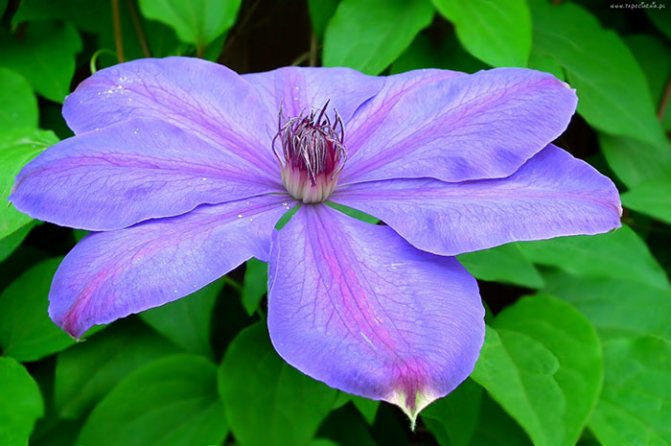

Reproduction methods
We have already mentioned that clematis are sometimes propagated by seeds. In addition, young plants can be obtained using summer and autumn cuttings. To do this, young shoots are pressed to the ground.After a while, roots appear on the layers, after which they can be separated from the mother plant and planted in open ground.
Reproduction by dividing the bush is another way to get young clematis. It can only be used on plants less than six years old. It will be much more difficult to work with older bushes, because they have a powerful root system, which will be very difficult to divide. Clematis is dug up and cleaned of the earth, after which it is divided with pruning shears.
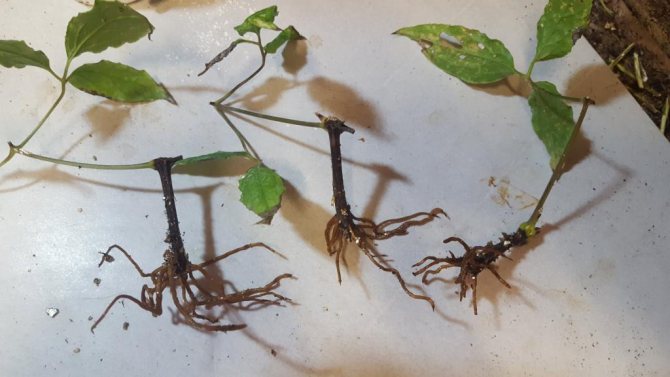

To obtain cuttings in October, the leaves are removed from the shoots, woven into a bundle, and then laid in grooves with peat. Sprinkle with soil on top of the workpiece. For the winter, they are covered with dry foliage and spruce branches. With the arrival of spring, the planting site must be watered frequently. After the emergence of seedlings, the soil must be mulched with humus and peat. By the fall, some of the plants will be ready for transplantation. Dig up young clematis with a pitchfork so as not to damage the roots. Layers can also be laid in the summer, but then it will be very difficult to preserve them in the winter.
In the spring, you can pin the shoots of the last year at the knot point. For this, pots of peat are used, which are buried in the ground below ground level. As the seedlings grow, soil is poured into the pots from above. By autumn, good seedlings are obtained from the shoots.
Vegetative propagation of a plant
Only clematis bushes that sprout in a permanent place for at least 5-6 years are subject to division. The method of reproduction has its advantages, because it is enough to dig up the overgrown bush, divide it into 2-3 parts depending on its size, and plant it in the ground in new places, without cutting it. If the shrubs take root, their flowering will be ensured this year. However, unfortunately, the risk that they will not be able to take root even in a month is quite high.
Cutting is associated with fewer risks, but requires more work and attention:
- Young tops of clematis are cut so that 2 pairs of leaves remain on them.
- On the cuttings, an oblique cut is made with a sharp razor or knife.
- One pair of leaves is removed.
- The plant is treated with a root stimulant.
- Cuttings of clematis are planted in disposable cups with peat or pots.
If you cover the cuttings of clematis with glass or cut plastic bottles, not forgetting to water them, after 26–32 days a root system will form and the plants can be planted.
Pests
Clematis, like other crops, are susceptible to fungal diseases. The appearance of the disease can be judged by the loss of tissue elasticity. Causative agents of ailments affect primarily the root system, so it is important to follow the rules of agricultural technology. Otherwise, its violation leads to the appearance of diseases. The first signs of ailments can be seen in the spring. In May, you can cut off damaged branches, and then shed the roots of clematis with a 2% solution of "Azocene" or "Fundazol". Severely damaged plants should be removed along with an earthy clod. And the place where the culture grows is treated with the aforementioned solutions. Preparations "Azocene" and "Fundazol" are good for fighting powdery mildew and gray mold. Sometimes clematis is affected by rust, which is a fungal disease. The disease is manifested by the appearance of red pads on foliage and shoots. In the future, the greens dries and deforms. To combat rust, use a 1-2% Bordeaux mixture solution. You can also use Oxyhom.
In the middle of summer, gray necrosis may appear on shoots and foliage. You can get rid of the disease with a solution of copper sulfate.
Useful tips for clematis care
- When choosing a variety, it is imperative to take into account the climatic conditions of the area.
- With a sharp change in weather conditions, it is necessary to take care of disease prevention.
- For the successful cultivation of clematis, attention must be paid to the composition and condition of the soil.
- Violation of watering rules can lead to the death of the plant's root system. The irrigation schedule must be strictly observed.
- Pathogenic fungi develop intensively in damp and cold weather, therefore, preventive measures should be taken.
Forum, reviews
Social networks widely cover the problems of leaving, breeding clematis. Whole groups of fans have been created, they publish photos of their favorites. Rave reviews from flower lovers about successful plantings, wishes to others for a successful cultivation. The advice of experienced gardeners encourages beginners to try growing the plant themselves. Here are some examples.
Forum. User Anchik2. He is looking for owners of clematis, grown plants in the dachas of the Leningrad Region, who are ready to share the shoots, since the purchased ones freeze out.
a user from Novopolotsk (Belarus) _stefan warns that varieties from Japan do not tolerate winter well, if they do not freeze, they bloom very beautifully, this is captivating, but the frosty winters of the middle lane practically do not survive, they die.
I took a photo of the spine and sent it to the company with a claim, to which I received an answer that there was no reason for a refund, ordered to plant a root and observe, then take another photo and send it to them.
Consults with experienced gardeners about dormant buds in clematis. After consultations, I concluded - do not order more flowers from this company. On the forum you can read and leave your feedback on the cultivation of clematis.
Forum "Blooming Dacha" contains information on all questions of interest from the rating of varieties to the elimination of emerging problems.
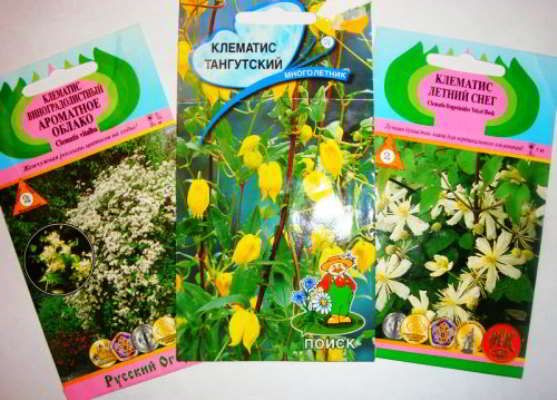

Bubbling
This method awakens the seed, starts the growth processes, and shortens the germination time. There are also several options. Here is one of them:
- A 0.5 liter jar is filled with a solution of baking soda (1 tsp per glass of water), immerse the aquarium compressor and the seeds placed in a gauze bag there, connect to the mains, leave to saturate with oxygen for 5 - 6 hours;
- after the expiration of the time, turn off the compressor, drain the solution, replace it with a regular drinking one, connect the network, bubble for another 3 - 5 days, changing the water three times a day.
After the procedure, soak the grains in a growth stimulator (Epin, Kornevin, humate, succinic acid), stand for 30 minutes, rinse with water, dry. Can be sown immediately on seedlings.
Planting a crop by the seed method
For all its charm, clematis are very capricious plants. Improper care of them, or planting can lead to falling petals, decay of roots, poor development and flowering. Clematis is propagated by dividing the bush, cuttings, layering and seeds.
Collection, sorting and processing of seeds
Different varieties of clematis have different seed collection times. In clematis with an early flowering period, the seeds ripen in summer, and varieties with a later flowering give a sufficiently ripe seed only by autumn. The seeds of these flowers also differ in shape and size. They are divided by weight into large, medium and small.
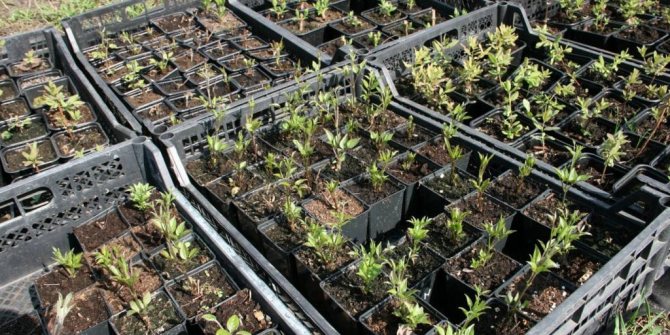

To prepare seeds for sowing, it is necessary to calibrate, that is, the selection of seeds by weight. As a rule, these are medium to large seeds. The most unpretentious for novice florists who decide to grow clematis from seeds is the Manchurian variety. You can get seedlings from it with a higher degree of probability.
Having set out to grow clematis from seeds, it is important for flower growers to decide when exactly it is necessary to get seedlings ready for transplantation to a permanent place in the ground. This must also be taken into account for the more probable survival of plants, and subsequently the acquisition of immunity and resistance to low temperatures in winter.
Before sowing, the seeds must be sorted by size, and a number of measures, such as stratification or bubbling, must be carried out to increase the germination of seeds, thereby strengthening the immunity of future plants to various diseases and their full development.
How and when is the best time to sow?
For sowing, as a rule, seeds are selected large and medium in size, without visible damage and the freshest in terms of collection. Since the seeds germinate for a long time and uncommonly, they need to be stratified. Seeds are sown in mid-February or early March in a container with a soil mixture consisting in equal parts of peat, sand and garden soil to a depth of 1-2 centimeters (depending on the size of the seed).
Plant features
Clematis has been cultivated in European countries since the 16th century; in Japan, the plant began to be bred much earlier. It is a favorite crop of numerous gardeners and is used for landscaping and decorating areas.
Shoots of herbaceous varieties die off with the onset of winter, whole-leaved and hogweed clematis lignify, which allows them to survive for several seasons.
Different species can have both fibrous and tap root systems. Florida, President and Radar of Love are considered the most common and unpretentious varieties in cultivation.
Sowing rules and specifics
When starting to propagate clematis, it is important to take into account the type of germination of their seeds, on which the sowing method depends. It happens:
- underground - the growth point is activated, being under the surface of the soil, the cotyledonous leaves open in the same place;
- overground - the growing point should be in the air, the cotyledonous leaves open above the soil level;
- intermediate - the growing point is in the ground, and the cotyledons are on the surface.
The type of germination is a varietal (specific) trait, individual for each crop variety.
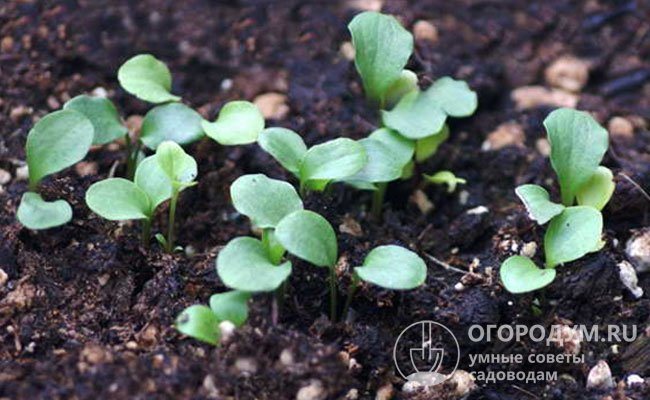

Cotyledonous leaves located above soil level
In open ground (in specially prepared ridges), you can sow only those plants whose seeds are capable of natural winter stratification and are characterized by a relatively high germination rate - these are species clematis (Tangut, Manchurian, etc.). In their homeland (in China, in the Far East), they form huge thickets, multiplying by "self-seeding". In central Russia, they are sown in the spring (in March-April).
The rest of the varieties are better grow through seedlings... Step by step, this process looks like this:
- a layer of drainage (5 cm) is laid on the bottom of a container (pot or box) 15-20 cm high, and then a substrate (10 cm), consisting of garden soil with sand in a ratio of 2: 1 or earth, sand and peat in equal proportions. The soil is well moistened;
- place the prepared seed depending on the type of germination. Seeds of the "aboveground" type are simply laid out on the surface at a distance of 5-7 cm from each other; "Underground" and "intermediate" types - covered with a layer of sand 1-1.5 cm thick;
- irrigate crops with water from a spray bottle. The containers are covered with glass.
Further actions depend on the chosen method of germination, which may involve stratification of crops or obtaining seedlings exclusively in warmth.
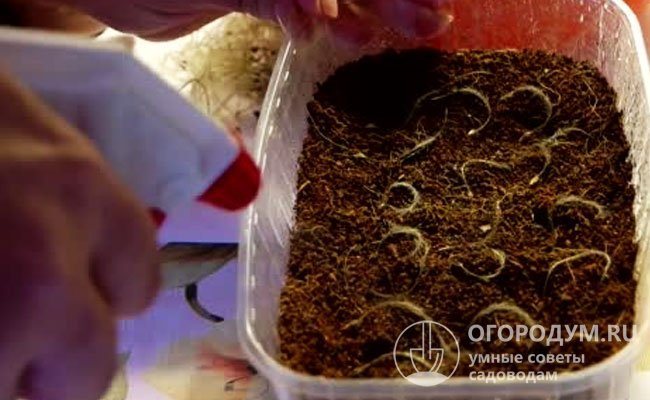

Seeds of the "aboveground" type are laid out on the surface of the prepared soil and irrigated with water
Large and medium-sized seeds are usually sown for seedlings at the end of November. Small clematis begin to appear in March-April. As they germinate, they dive into individual containers (for growing in a greenhouse) or directly into the ridges. Most experts agree that this should be done as early as possible, preferably at the age of the cotyledon leaves or after the first pair of true leaves appear. Seedlings cut after this period are more likely to get sick and grow more slowly.
The culture of clematis is characterized by a prolonged period of emergence. Even with intensive pre-sowing treatment, the seeds of many varieties can germinate from 3-4 weeks to several months. At the same time, experts note that the early-emerged seedlings of large-flowered hybrids in the future are less decorative than their "counterparts" that emerged in the middle and late periods. Therefore, the sprouts from the common containers are removed very carefully, and the seedling boxes themselves are placed in greenhouses for the whole summer to give the seeds remaining in them time to germinate.
Sowing timing and sequence
Planting with seeds is a painstaking and multi-stage procedure. Small-seeded varieties of mountain, virgin, grape-leaved and other clematis are sown at the end of April in open ground. If you want to enjoy the spreading vines earlier, then they resort to growing seedlings. Before sowing in boxes, the seeds are soaked in a manganese solution for 3 days for disinfection. After that, they are sown in pre-moistened soil.
Sow to a depth exceeding the seed size by 2-3 times.
This planting technology avoids washing out the planting material from the soil. The optimal time for sowing small-seeded seedlings is March.
Medium-sized planting material is stratified over a period of 2.5 months. It is placed in plastic containers and kept at subzero temperatures for about 8-10 weeks. After that, soak in warm water for 7 days. To avoid fermentation, a natural cloth or paper napkins are placed on the bottom of the container. The first layer of the substrate is moistened with water or a weak manganese solution. Spread the seeds loosely on the prepared napkin and cover with 2 layers of wet wipes. After the embryos hatch, they are planted in the ground. The approximate sowing time is the beginning of March.
With specific clematis, everything is much more complicated, since seedlings appear after 11-12 months. Experienced florists recommend sowing in the following sequence:
- In December, seeds are soaked in moistened napkins for several days. To accelerate germination, they can be previously held in a solution of Epin, succinic acid or Cytovin for 30 minutes. Then sowing is carried out in a container where a small drainage layer is provided. For all types of seeds, a universal soil is prepared from equal parts of sand, peat and earth from a garden plot. Watered plantings are exposed for 14 days on the windowsill, where the temperature is maintained at +16 or + 20 ° С. The earth is spilled with melted or boiled water as it dries.
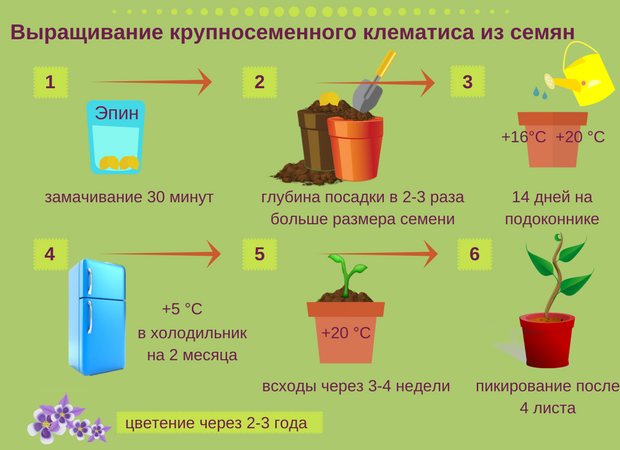

Growing instructions - After 2 weeks, the container is sent to the refrigerator compartment, where the temperature readings are not higher than + 5 ° C. Withstand in such conditions for 2 months.
- The container is placed in a warm, well-lit room at a temperature of + 20 ° C. The first shoots appear in 3-4 weeks, sometimes later. Young shoots are thinned out, removing weak and twisted shoots.
It is quite difficult to grow clematis from seeds without preliminary antiseptic treatment and stratification. Planting material can lie in the ground for more than a year and a half before the first shoots appear. If you know how to care for Selaginella, then there will be no problems with sowing.
Professionals and garden flower enthusiasts have accumulated a wealth of experience in seed stratification. Sharonova and Sheveleva offer a different technique. Sharonova suggests sowing in a plastic container in the fall. She recommends covering the container with a film and leaving it in a dark place, planting the emerging seedlings in pots, and planting them in the ground in July. Sheveleva advises keeping a jar of seeds in the refrigerator for 3 months, and organizing sowing in containers in the spring.
Description of the flower and its features
Clematis are divided according to life forms: herbaceous, semi-shrub and shrub, in size: small-flowered with a flower size of 2 to 5 centimeters. and large-flowered with a flower size of up to 15 centimeters. They are very diverse in the shape and appearance of the petals: stars, double, three-petal, four-petal and tulip-shaped.
Small-flowered clematis include: Tunguska, Alpine, Virginia, Chinese, they are very unpretentious, drought-resistant and frost-resistant plants. Large-flowered clematis include: "Zhakmana", "Vititsella", "Langunosa", "Taxensis".
Which variety is right?
If you are fired up with the idea of obtaining clematis from seeds, you will have to seriously approach the process of choosing a variety suitable for breeding.
- For beginners who are just planning to learn all the secrets of growing clematis from seeds, better to start with the Manchu variety... These plants look more like bushes than vines. In summer, the shoots are covered with small white flowers that exude a pleasant aroma. Manchurian clematis is easy to care for and grow, so there are no problems with it.
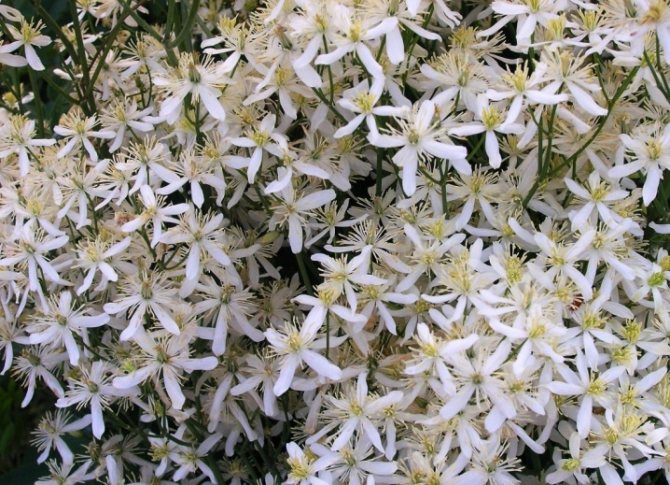

- "Arabella" - This is an unpretentious clematis, which belongs to late-flowering and large-flowered vines. Flowering will continue from May to September if the plant is in ideal conditions. The flowers reach 10 cm in diameter, painted in a purple shade with gray notes. Throughout the season, the lilac color changes to blue, which makes the vine spectacular and expressive.
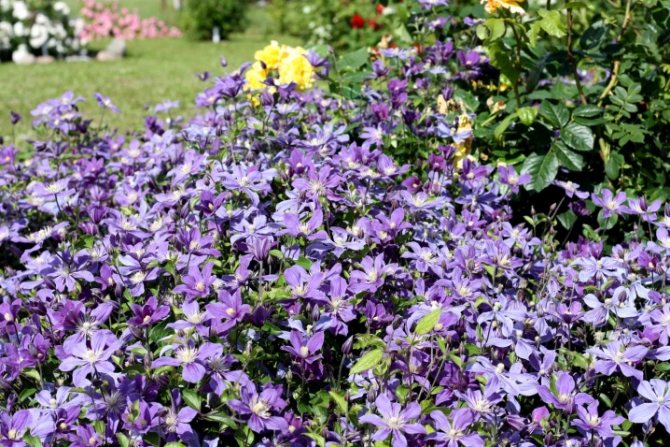

- "Blue Light" refers to early vines. Terry flowers, painted blue. Shoots with a length of about 2 meters cling well to the supports with the help of leaf petioles. This clematis blooms 2 times a year, well suited for growing in containers.
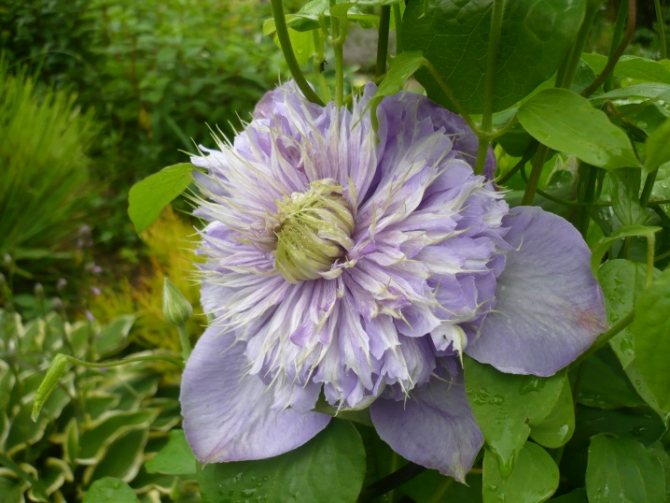

- "Blue Explosion" - the result of the work of Polish breeders. The liana is decorated with large blue flowers, in which pinkish notes can be traced. The diameter of the flower starts at 12 cm, and the length of the stems reaches 3 m. The flowering of this clematis can be enjoyed twice a year.
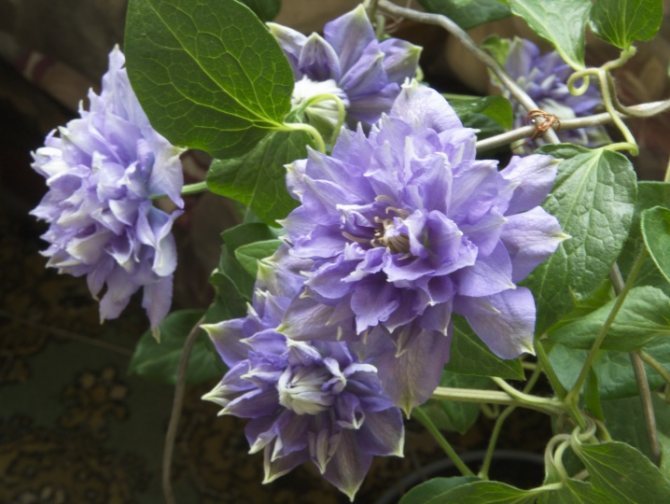

- "Westerplatte" is held in high esteem among gardeners, as evidenced by numerous positive reviews. This variety also originated in Poland. The stems grow up to 2 meters, they are decorated with sparkling, red, large flowers.
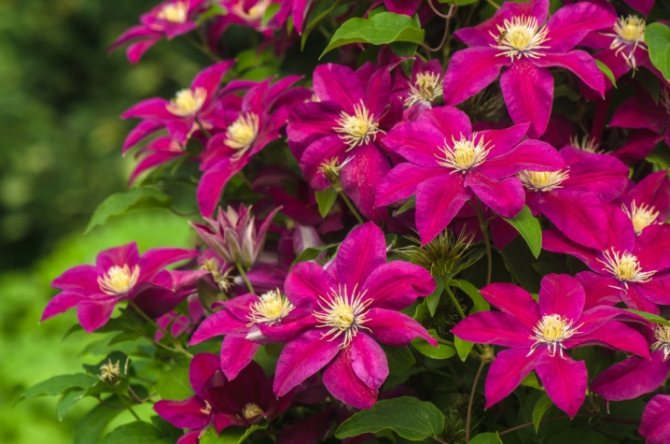

- "Helios" with proper seed cultivation, it can give good results. The seeds can be bought at a specialty store or even harvested by yourself. Clematis of this variety is a vigorous plant with stems up to 3 m high. From June to August, the liana is decorated with a scattering of small yellow flowers that have an inverted shape.
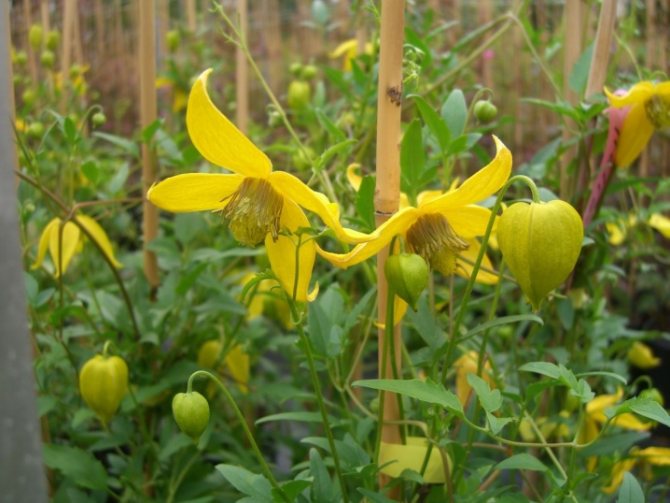

- "Daches Eydinburg" blooms early, releasing large terry flowers of snow-white color in the shape of a ball. The stems grow up to 3 m.
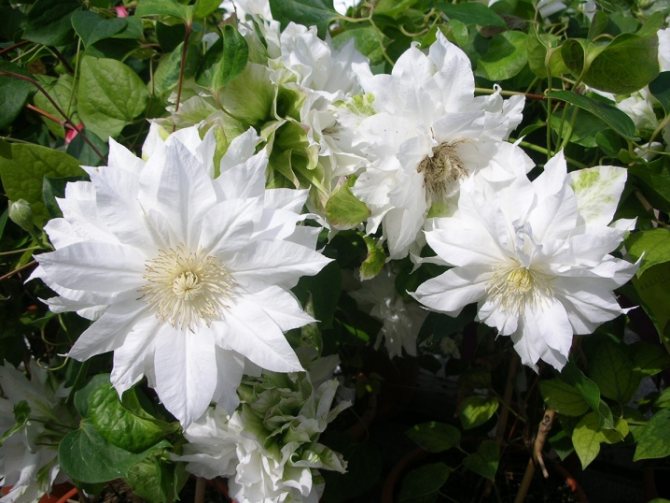

- "Dr. Ruppel" is the most original variety from our selection. The color of large flowers changes depending on the lighting: there is a fuchsia-colored stripe on a pink background, or a lavender flower is decorated with a pink stripe. Liana blooms twice a year.
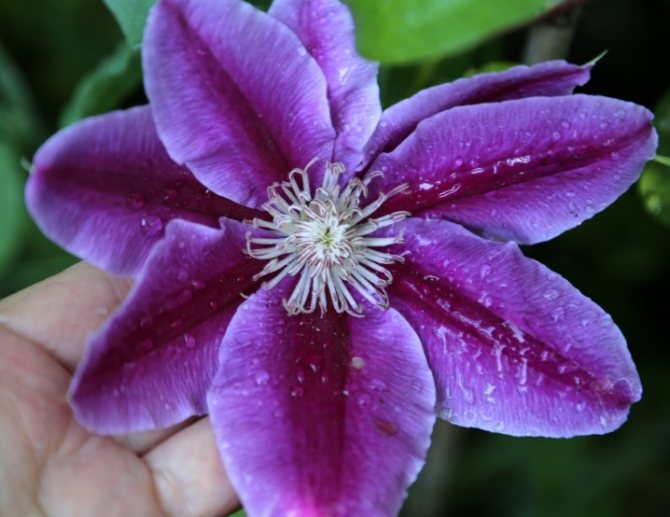

- "Cloudburst" Is a late variety with large flowers. It was recently bred by Polish breeders. Shoots grow up to 2.5 meters in length, they are decorated with flowers with a pink-purple color, a white center and pink veins. The petals are diamond-shaped, wavy, sharp edges.
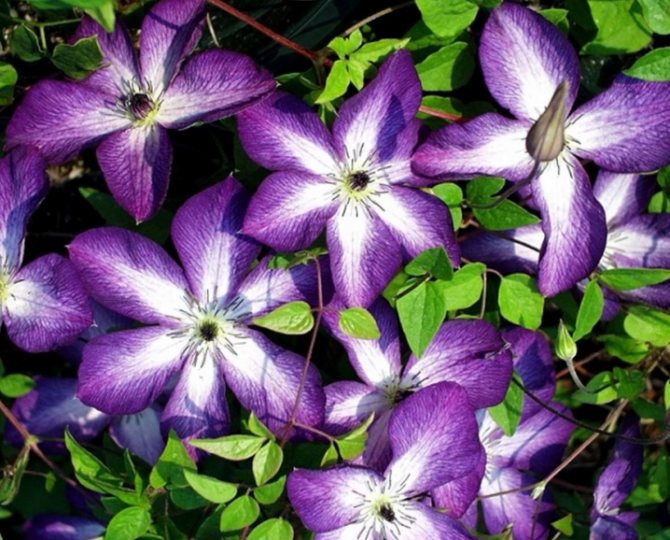

- "Comtess de Boucher" it blooms late, is considered a strong crop, the shoots of which grow up to 4 m. Pink flowers appear twice a year.
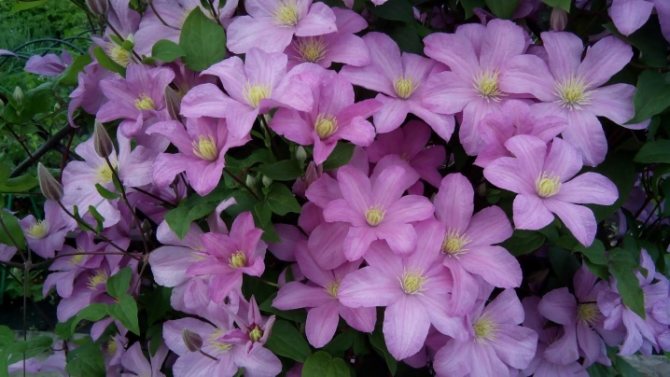

- "Clematis Long Fire" really resembles fire due to bright flowers, which reach 16 cm in diameter.Although repeated flowering is not typical for this plant, this clematis already produces many flowers that completely cover the vine. The height of the stems does not exceed 1.5 m.
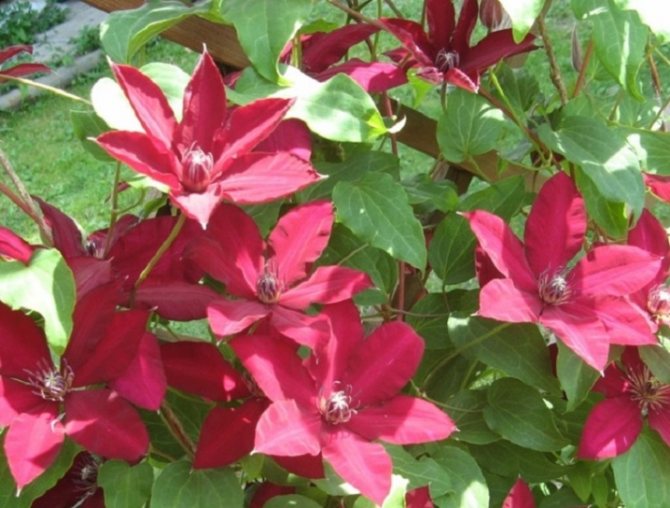

- "Omoshiro" is originally from Japan. It blooms twice a year, three-meter stems are covered with large snow-white or delicate pink flowers.


- "Change of Hart" - This is a strong clematis with two-meter stems, which are covered with red flowers with a purple tint 2 times a year. The diameter of the flowers starts from 10 cm.
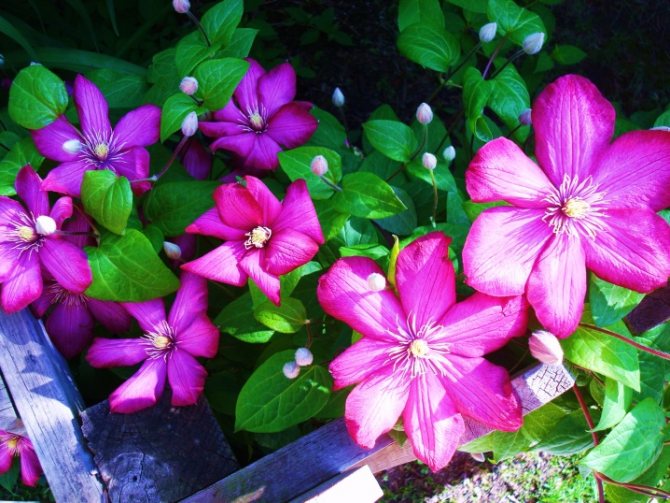

- "Etual Violet" fell in love with gardeners for its unpretentiousness, abundant flowering, spectacular purple flowers and the possibility of seed reproduction.
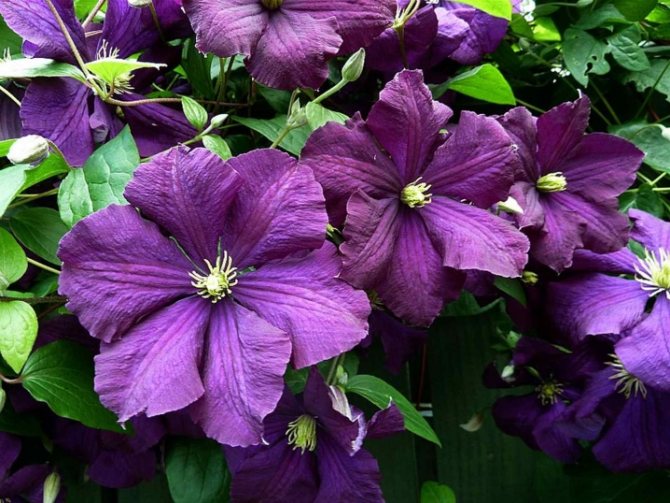

We strongly recommend using the seed of these particular clematis, especially if this is the first experience. With these varieties, the chances of success increase.
Other names
Before telling how to grow clematis from seeds, it will be useful to understand the terminology. After all, clematis also has a number of other names, which can cause certain difficulties and confusion.
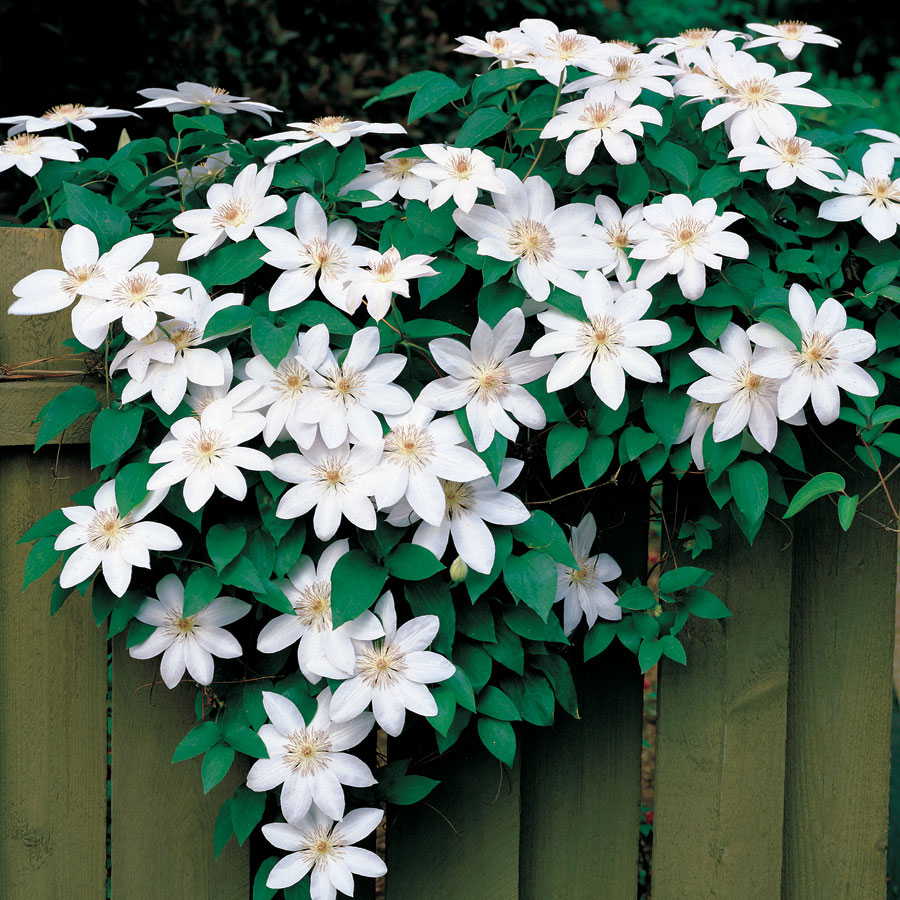

This plant belongs to the Buttercup family. And in Latin, its name is really clematis. But in the Russian language, the more familiar is more common - "prince". Yes, just such a simple, but still pretentious name was given to the plant by our ancestors. However, the flower has other nicknames, for example: wild hop, atragene, loach, boar hop or branch. So, having heard any of these words, you can be sure that the conversation is about gentle clematis.
Home care
After planting the seeds, the container with the sown clematis seeds is kept in a room with an air temperature of 21-25 ° C in a lighted place or under a phytolamp, while it is necessary to regularly but moderately water. Typically, the process of seed germination takes from 3 weeks to 3 months, depending on the variety and the conditions created.
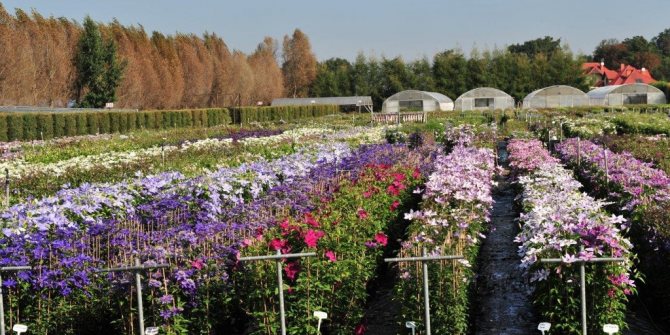

While caring for sprouted seedlings it is necessary to observe the temperature regime and moderate soil moisture... In phase 2 of true leaves, the seedlings need to be cut into separate containers and continued with regular watering to improve the development of the root system. You can also plant seedlings in a volumetric container with a distance of 15 centimeters between plants.
Seed classification
After flowering, the clematis flower forms a silky fluffy head, consisting of nuts, equipped with a fluffy tail (for better spread by wind or birds) with seeds contained in them. Different types of clematis and seed of different sizes:
- large from 6 x 5 mm to 10 x 8, characterized by long uneven germination, the first individual seedlings may appear after 2 months, friendly shoots - after 6 - 8, or even after a year (paniculate, straight, c.viticella (purple);
- medium from 5 x 3 to 6 x 3 mm - this group has uniform germination, sprouts appear after 1.5 - 6 months (Manchurian, Chinese, whole-leafed);
- small from 3 x 1.5 to 5 x 3 mm, they have excellent germination, after 2 - 3 weeks friendly seedlings will appear (Tangut, grape-leaved, gray-gray, oriental).
Large seeds remain viable for 4 years, medium - 3, small - 2. For ripening, 3 months and a post-harvest ripening period are required. For different species, the ripening time is different from several tens of days to a year.
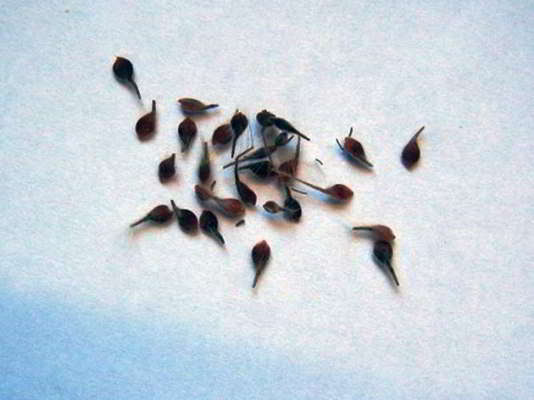

Clematis application in landscape photo
Many flower lovers know clematis as a garden liana with incomparable flowers, decorating gazebos, pergolas, fences, disguising old buildings, giving an extraordinary charm with exotic flowers:
- Frederic Chopin hybrid (light blue large single-row flowers with wavy edges of petals and creamy stamens, grows up to 3 m, blooms from June to September).
- Lady Betty Balfoe (grows 300 - 400 m, large 10 - 15 cm blue-violet flowers with white fluffing in the center of a pointed petal and white stamens, blooms profusely from July to September).
- Krakowiak (frost-hardy, unpretentious to soil and location, blooms from mid-June to September, pink flowers with a wine-red stripe, petals with a corrugated edge).
With a woody stem, clematis gives beauty to microborders, can be grown in flowerpots, balcony containers:
- Violet Elizabeth - 1.5 m high, pink, double flowers, blooms 2 times (May - June on last year's shoots, and in September blooms on newly appeared ones);
- Stefan Fanzak - bright blue with a light stripe in the center, the petals are strongly corrugated, blooms twice, grows up to 1.5 - 2 m.Snow Queen - blue-white flowers with red stamens, up to 20 cm in diameter, a rare variety, blooms continuously, long, abundantly.
- The Rooguchi variety is herbaceous, can be used as a ground cover plant, the stem grows up to 3 m, the flowers are small, bell-shaped, violet-blue with light edges.
On an alpine slide, it is acceptable to grow the Tangut species.
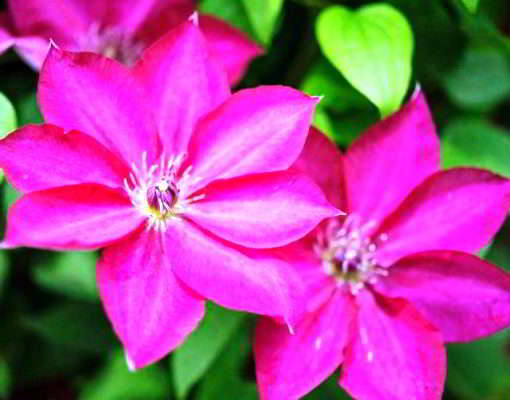

Preparing clematis seeds for sowing
Due to the fact that the seed of medium and large sizes does not germinate well, you should prepare in advance for the procedure for planting clematis with seeds for seedlings and improve the time interval during which clematis germinates. That is, to carry out stratification. How to do it:
- Prepare the soil and add it to the container. It must contain equal parts of the soil:
- peat;
- sandy;
- garden.
When early spring comes, sow the achenes (those that are larger - 2.5 cm deep, those that are smaller - 1 cm) in a special vessel.
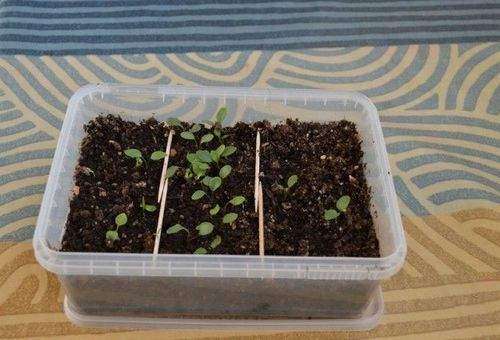

For greater germination of seeds, barbating should be carried out. For this:
- Take a jar with a volume of half a liter and pour into it a previously prepared suspension: 1 teaspoon of baking soda in a glass of water.
- Submerge the seeds in the solution and turn on the aquarium compressor for 6 to 7 hours.
- Replace the suspension with water and continue bubbling for 4 days. Remember to change the water three times a day.
general information
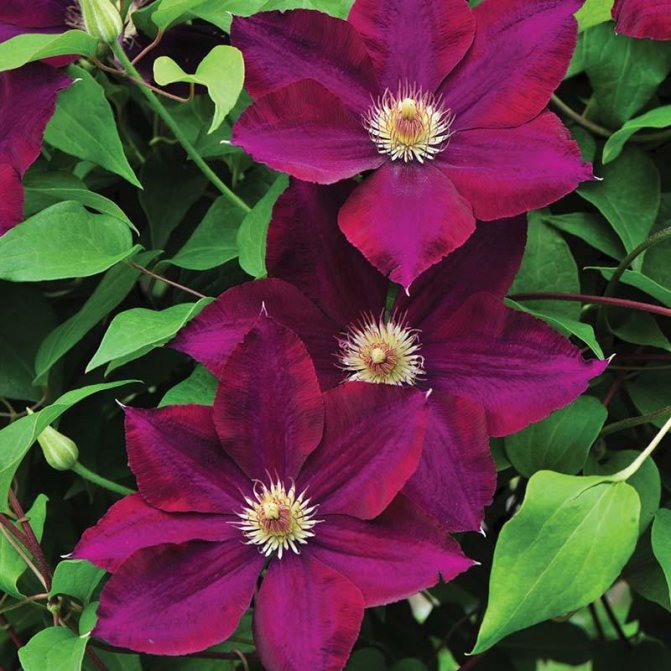

Whether wild or hybrid varieties, the plant has a woody stem. But there are also such crops that belong to herbaceous varieties. An adult flower in its appearance resembles a lily, which is dotted with multi-colored buds of impressive size. It is worth noting that clematis seeds germinate well and give a good harvest. Due to its variegated color, the flower is widely used in landscape design. With the help of it, they create unique compositions that simply have no equal. The plant is equally well suited for decorating flower beds, fences and gazebos. However, it is very important to properly grow this amazing culture. Most gardeners do this with shoots, but there is also a small group that prefers the seed method. It is more complex, but no less effective. What should be taken into account in this case will be discussed below.
Natural clematis
In addition to garden ones, wild clematis are often found in the decoration of the exterior.
- Common clematis, which grows naturally in the Crimea, the Caucasus, Central Asia and Western Europe, belongs to the thermophilic climbing shrubs. In winter, it requires shelter, since it does not tolerate frost well.
- Alpine clematis, native to Central Europe, is more resistant to harsh climates. It is a medium-sized woody vine.
Sowing
Sowing is a very crucial moment, but do not worry, but just follow the algorithm on how to plant clematis with seeds:
- Divide the sprouts into a wide container or into separate thermal containers. The distance between seedlings should not exceed 20 cm, but also not less than 14 cm.
- Watering clematis should be moderate, depending on the situation.
- Protect the plant from direct sunlight and through winds.
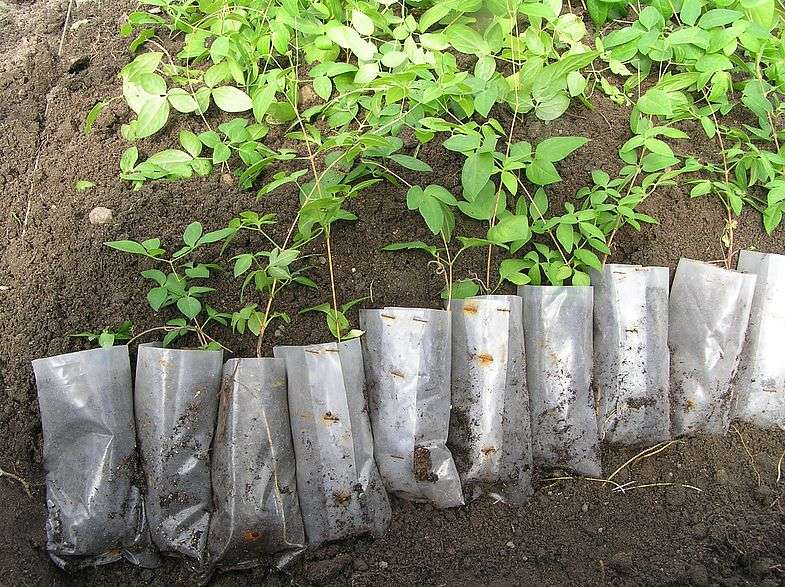

It is not so easy to say exactly when to plant clematis seeds, but around the beginning of spring.
Growing seedlings
With the onset of warm days, we choose an area with a deep bed of groundwater, we carry out drainage. We dig a deep hole (it is important that the roots of the plant fit quietly). We lower the seedlings there, after that it is important to straighten the root system and install a support. We fill the void with fertile soil, the neck of the clematis should be 6 - 11 cm in the soil. We water and take care of the perennial, do not forget to periodically pinch the vine. Before collecting clematis seeds, water it well as well.
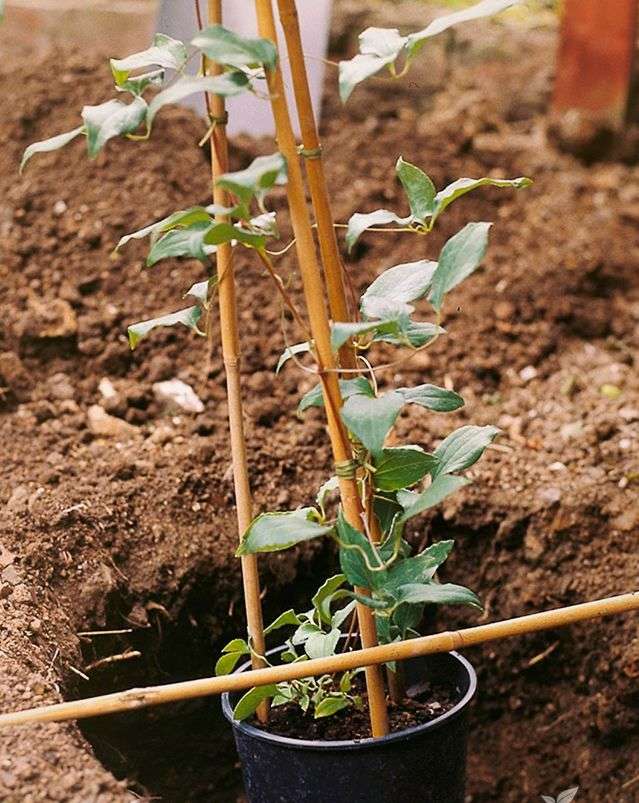

What is clematis photo
The genus of perennial flowering vines Clematis or "Lomonos", belonging to the Buttercup family, includes more than 200 species of diverse forms that grow throughout the subtropical and temperate climates. Plants are also varied in appearance, which are clearly visible in the photo.
Typical representatives have climbing shoots, clinging to the support with cuttings of leaves from 3 to 10 m, sometimes woody from below, erect up to 150 cm, others are flexible, herbaceous, creeping. The root system of some species is fibrous with thin, light brown roots, while others are pivotal with thick, dark brown strong roots that penetrate up to 1 meter deep.
A feature of the flower is the colorful perianths, which play the role of petals, with numerous shades of white, red, blue, purple, yellow.According to the size of the flower, clematis is divided into small-flowered (2 - 7 cm) and large-flowered (8 - 25 cm). Flowers are single or collected in inflorescences (panicle, semi-umbilical, scutellum). Some species have a pleasant aroma.
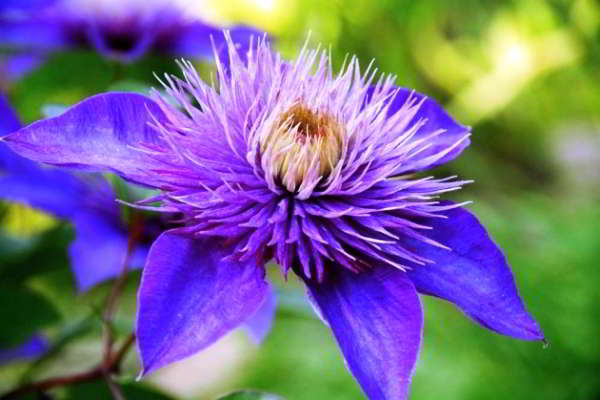

Each species or variety also has different leaves. In some, they are unpaired, complex, consisting of 3 to 7 leaves, in others, they are simple, opposite. The surface of the leaf also varies: naked or pubescent, sometimes leathery. A feature of many species is the ability of the leaves to wrap around the support with cuttings, holding on to the weight.
Clematis bloom profusely, for a long time, continuously from May to September, or twice a season. The first flowering occurs on last year's stems, the second - on newly emerged shoots.
Shoots of herbaceous species die off in autumn, and in spring they grow back from basal buds. The woody forms retain the stems. An attentive attitude to the plant preserves its decorative effect for up to 20 years.
Medium to small seeds of a charming handsome man
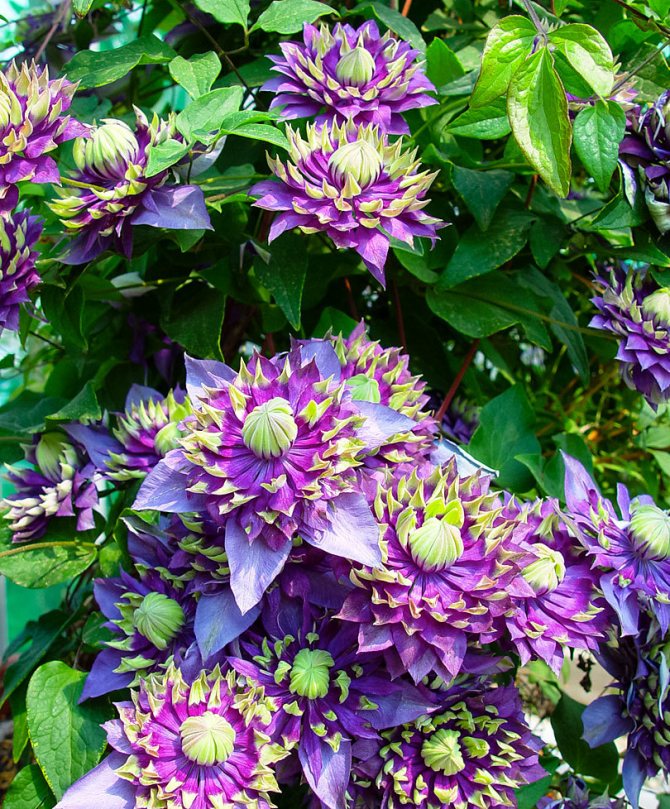

The seeds will also not sprout very quickly after sowing, and this can take from three months to six months. These are clematis Six-petaled, Manchurian, Whole-leaved, the depth of embedding of which is up to 1 centimeter. These seeds also require stratification.
Small seeds, which are distinguished by high germination and aerial germination, and also do not require complex preparation, are obtained for reproduction from the clematis of the Grape-leaved, Barshevik-leaved and Vostochny. They are recommended to be planted at the very end of winter or early March. They germinate rather quickly - in a month or two.

